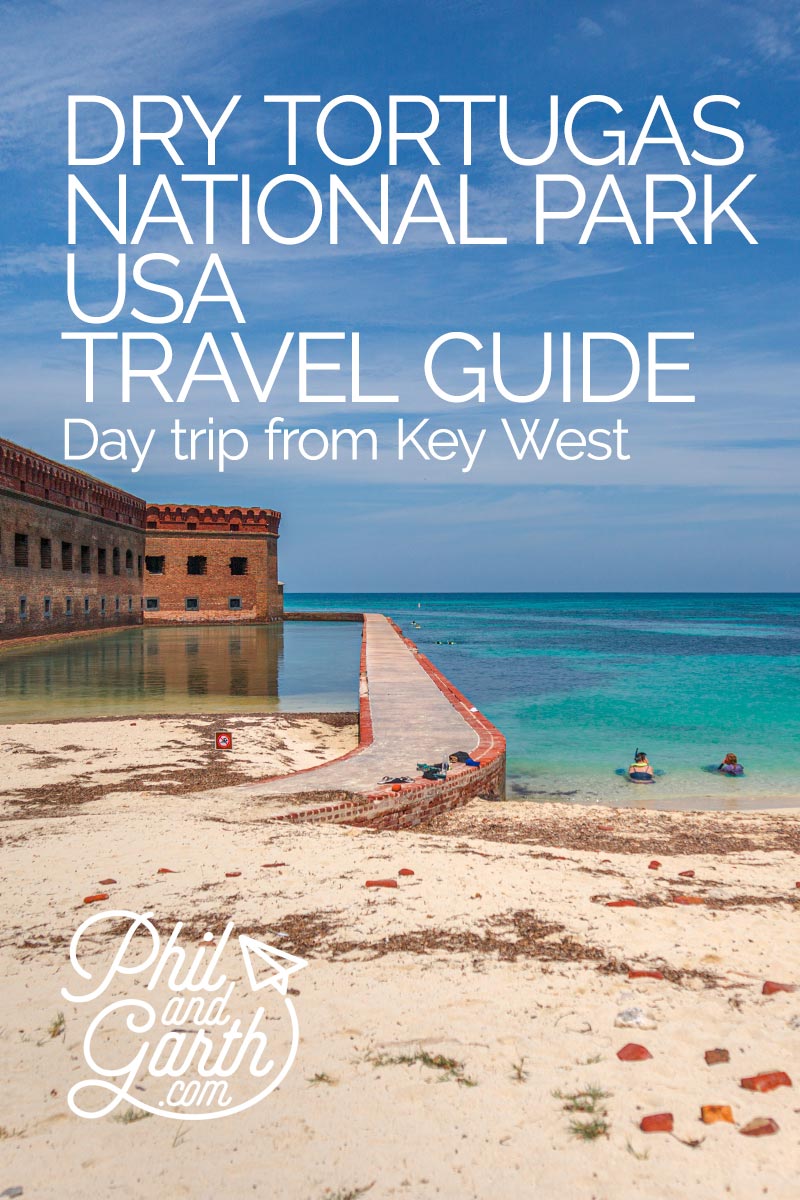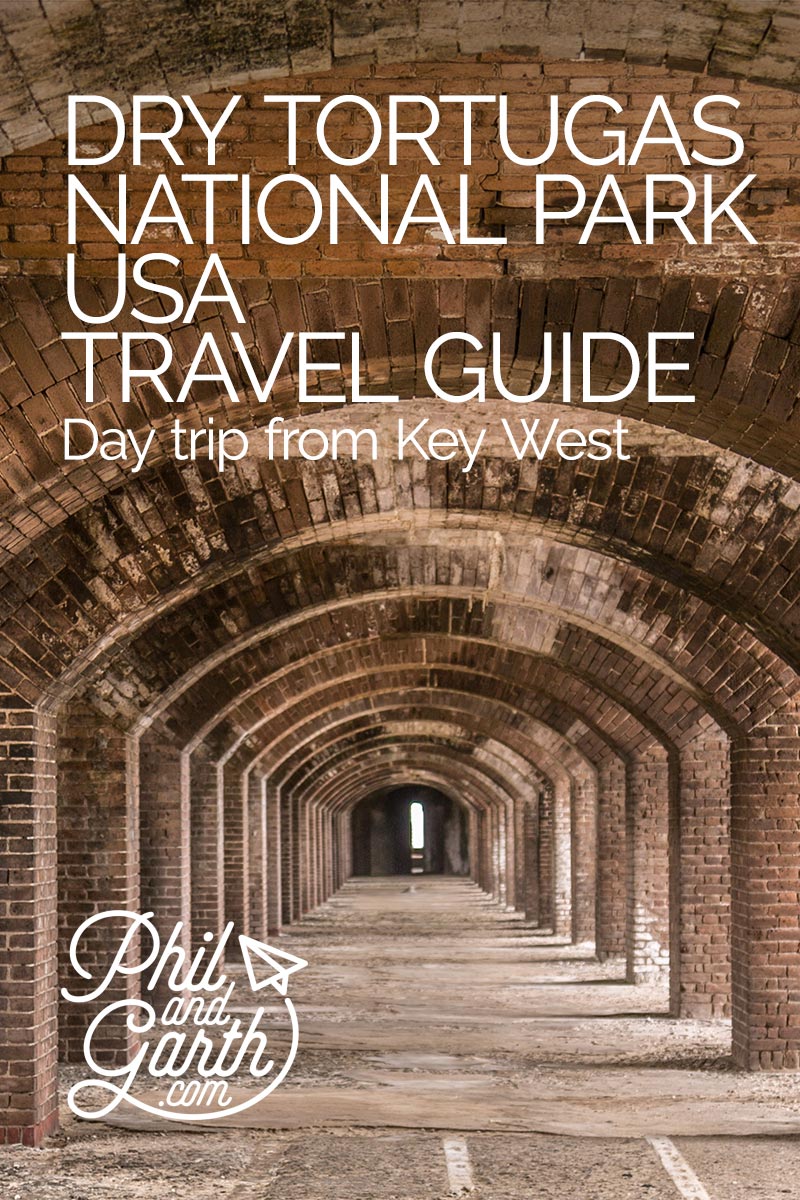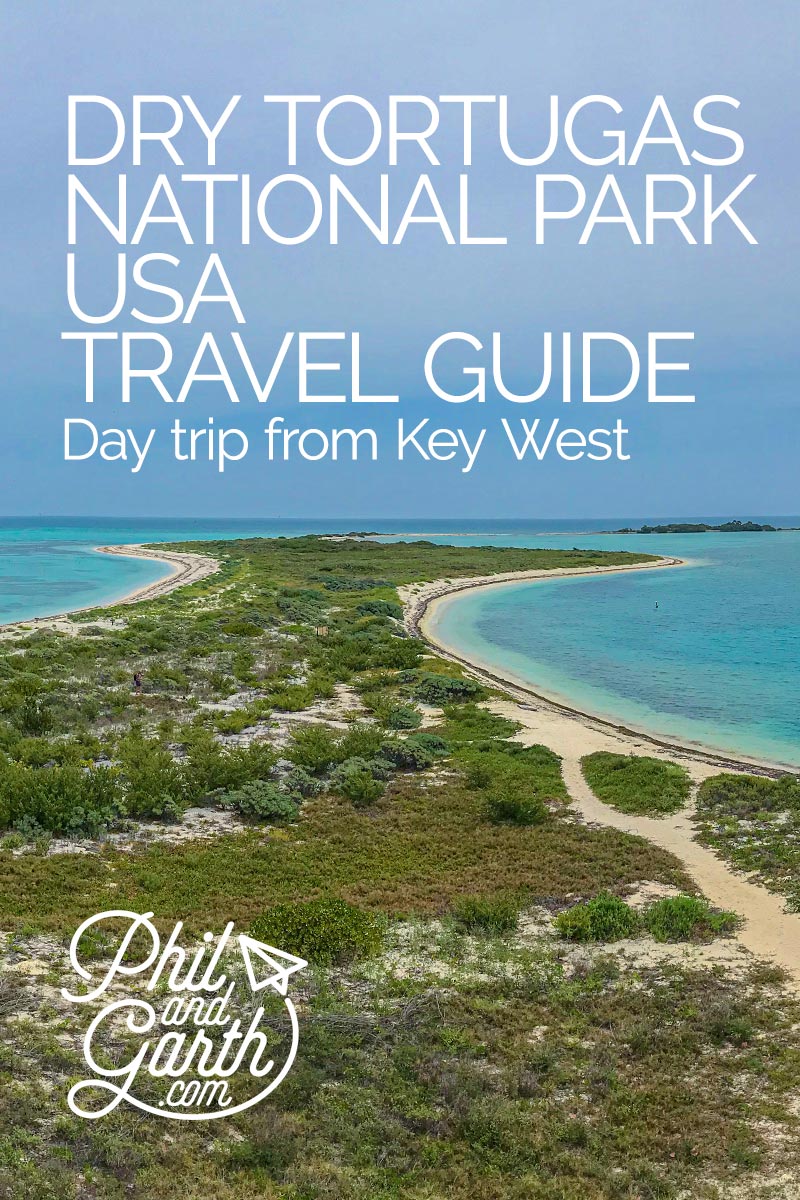Last updated: 2nd June 2022
In this post we will tell you all about our Dry Tortugas National Park day trip from Key West. Dry Tortugas is Florida’s 3rd national park and most of it is underwater – 99%. It’s remote, isolated and distinctive comprising 7 small islands over 100 square miles. We especially loved the superb snorkelling here, it’s a bucket list adventure and half the fun is getting there!
Table of Contents
America’s National Park in the Middle Of The Sea
70 miles west of Key West in the Gulf of Mexico lie a cluster of 7 small uninhabited coral and sandy islands that make up one of the most unique national parks in the world – The Dry Tortugas National Park. Famous for its remoteness, natural beauty and wildlife – birds, marine life and protected coral reefs. Plus one of the largest coastal forts ever built – Fort Jefferson. Most of the islands in the park are closed to the public to protect the wildlife like nesting turtles and birds, however you can easily visit one of the islands, the second largest – Garden Key on an epic day trip from Key West.
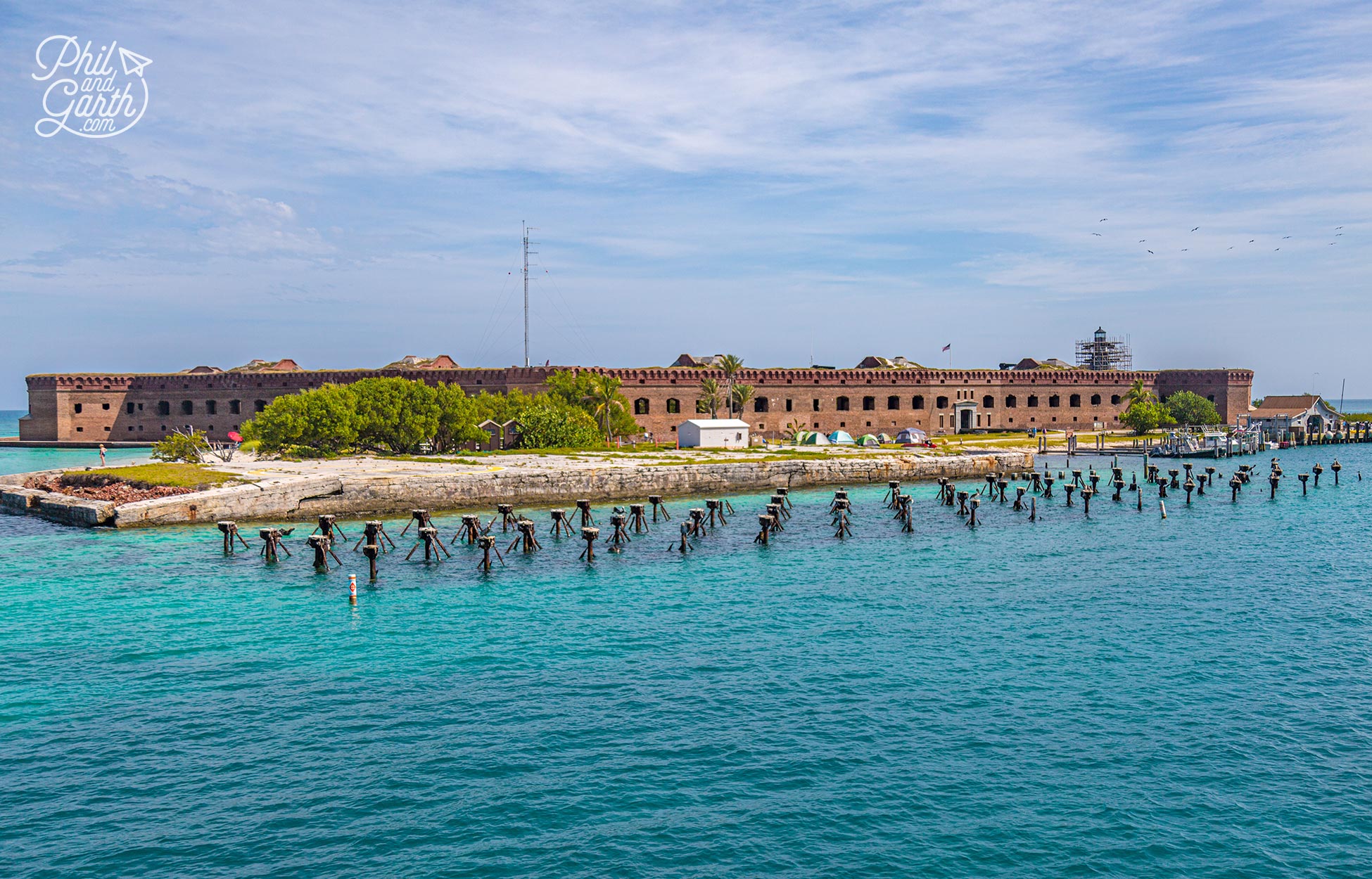
Arriving at Garden Key, one of the islands that make up the Dry Tortugas National Park
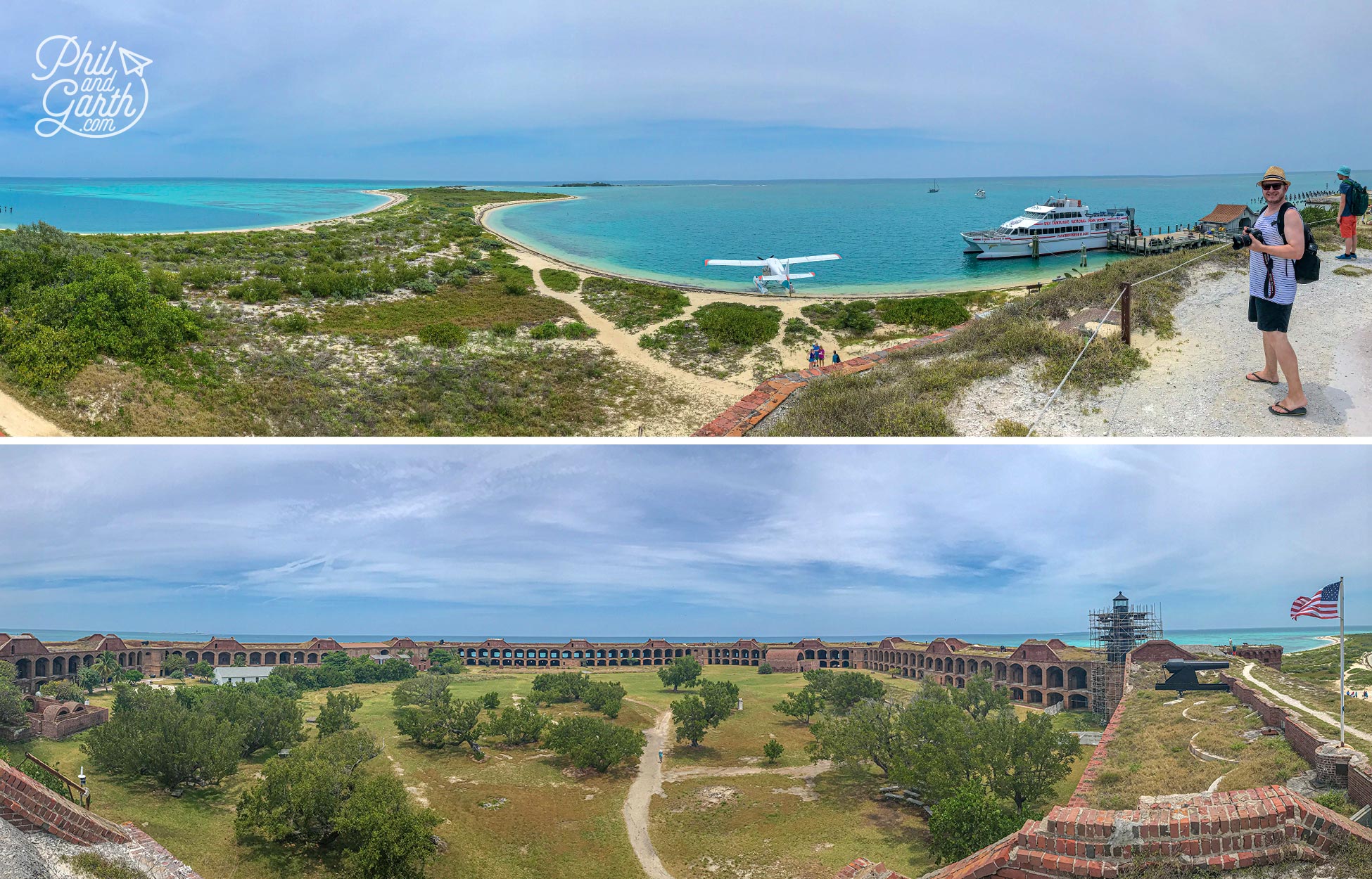
Panoramic views taken of Fort Jefferson and Garden Key’s beaches
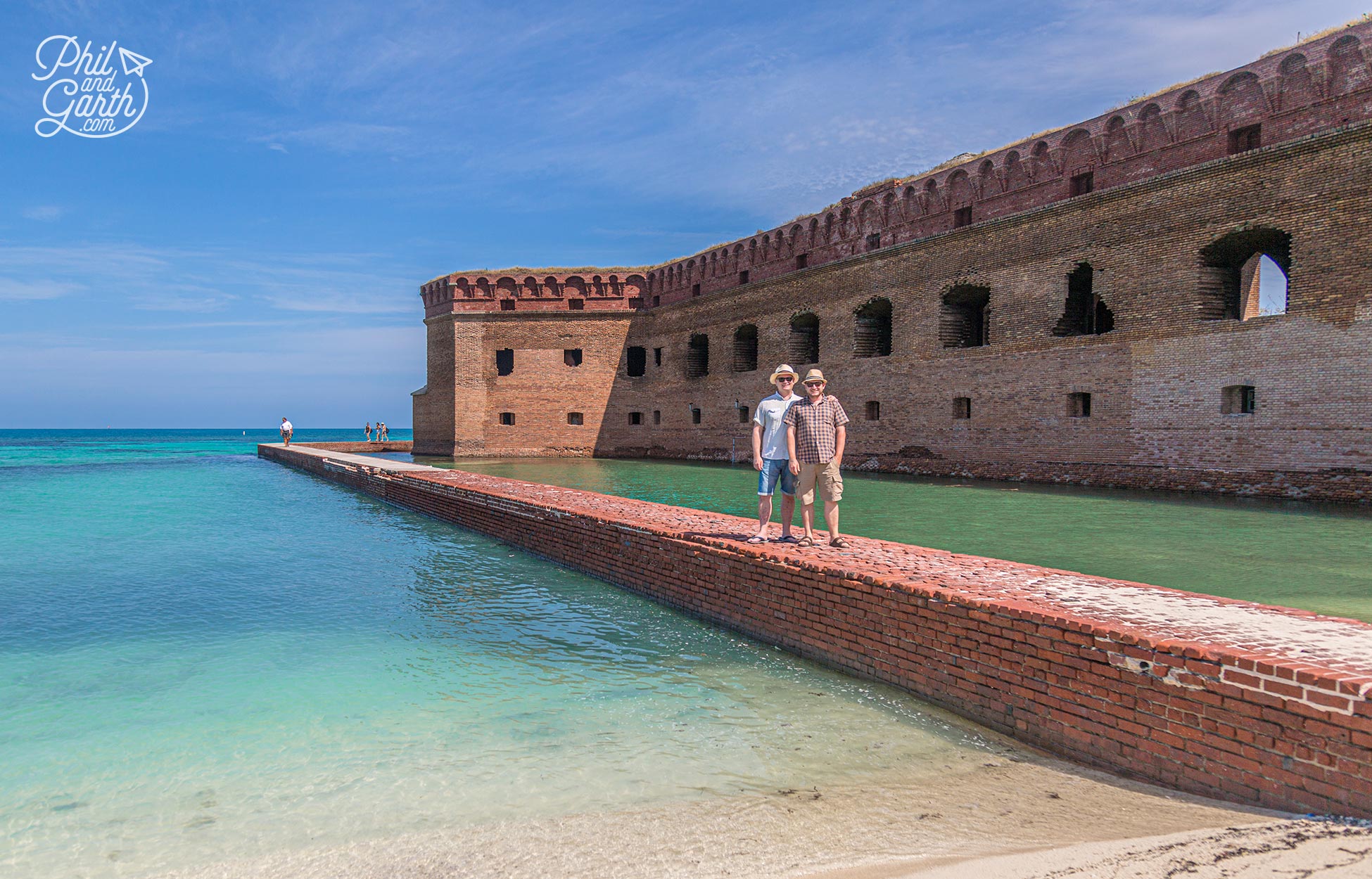
Phil and Garth standing on the seawall that creates the moat around Fort Jefferson
How To Get To Dry Tortugas from Key West
There’s 2 ways for tourists to visit Dry Tortugas from Key West. The quickest and most glamorous way is by seaplane which takes 40 minutes. The other way is on the official ferry the Yankee Freedom III which is what we did. It’s an exciting full day tour – the adventure lasts 10 hours from start to finish. The price includes park entrance fees, breakfast, lunch, soft drinks, snorkelling gear and an optional 45 minute guided tour of the fort when you arrive.
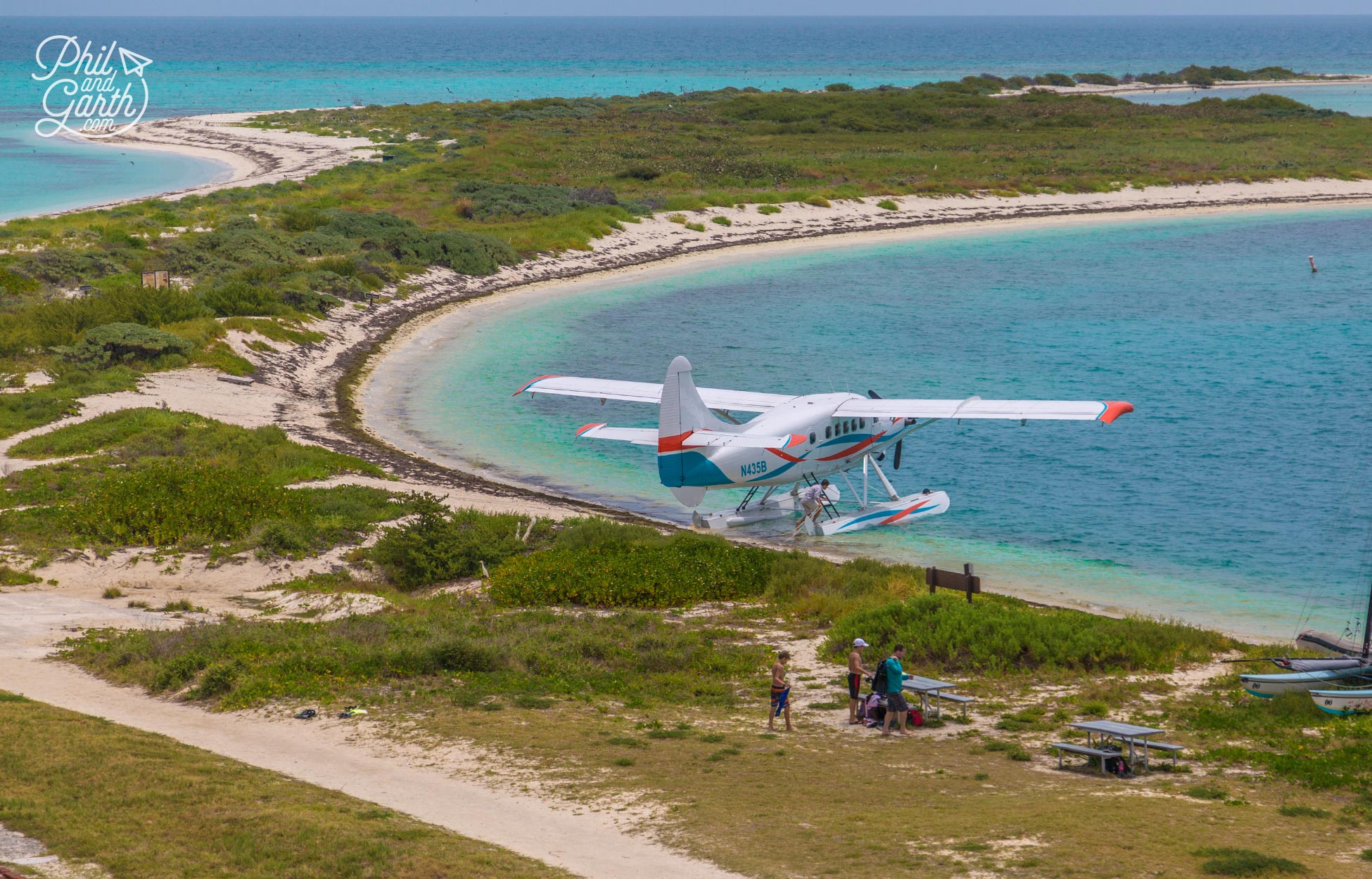
It takes 40 minutes to get to Dry Tortugas from Key West by seaplane
Dry Tortugas National Park Day Trip
Getting There by Ferry
First off you must plan when you want to go as you will need to book your ferry tickets well in advance – we’re talking months in advance! it gets booked up quickly. We got up early and checked in at 7am and departed Key West promptly at 8am. The impressive 110 foot catamaran travels at 30mph and takes 2.5 hours to reach the Dry Tortugas National Park. After having a decent breakfast onboard, we sat on the open air upper deck to soak up the sights of the marine life. On the way we saw dolphins, turtles, jelly fish and lots and lots of flying fish. We’d never seen them before, it was amazing watching them leap out of the water! On arrival you have 4.5 hours free time to explore before the journey back to Key West.
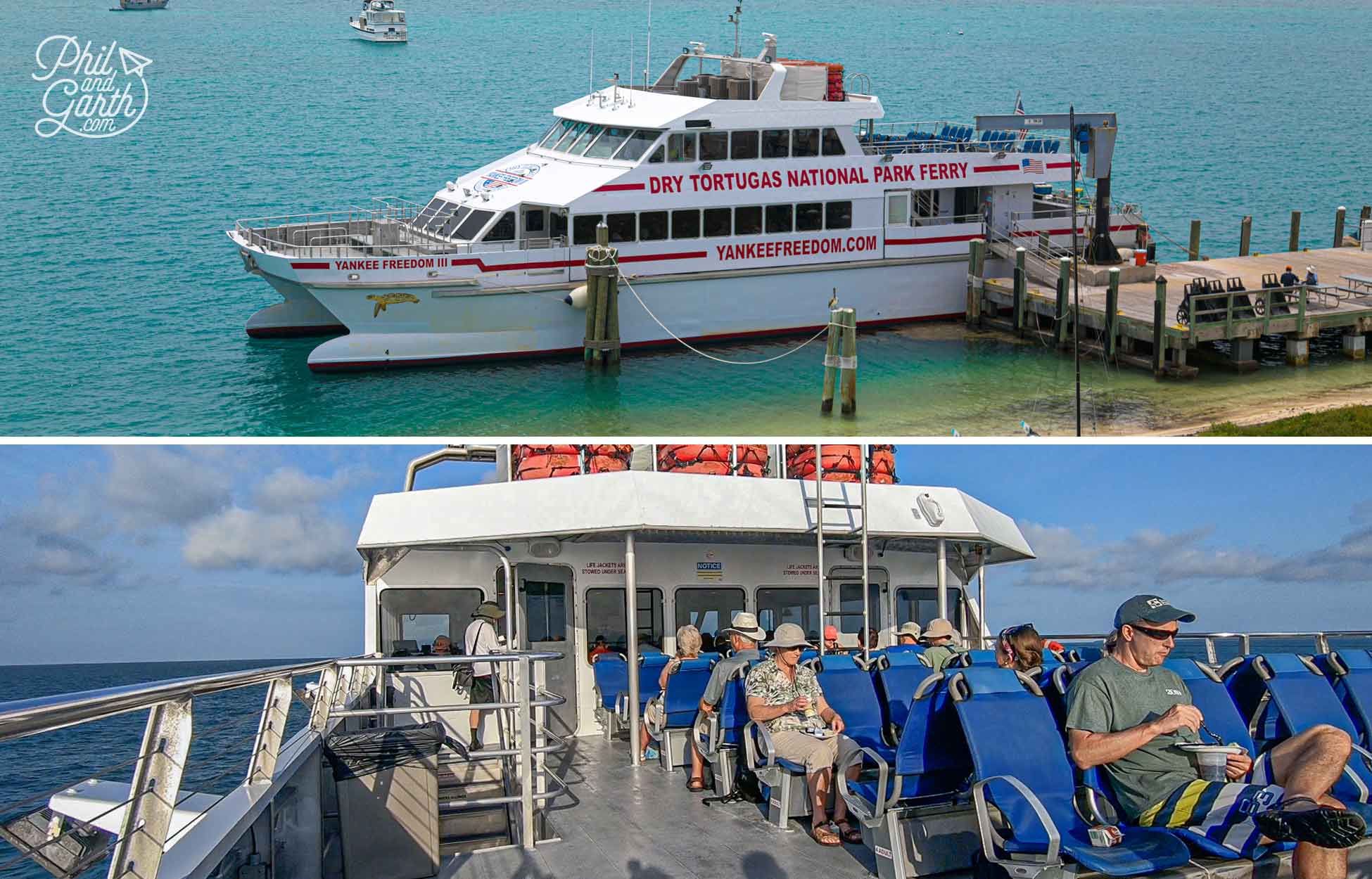
You’ll need to book tickets for the official Dry Tortugas National Park Ferry, The Yankee Freedom III months in advance
Just like our shock at the price of a Disneyland day pass we paid 2 weeks earlier on our road trip, the ferry day trip is also expensive ($190pp) however we both thought the experience was well worth it. It’s a beautiful and unique destination, think of it as a bucket-list worthy day trip.
Camping at Dry Tortugas
If you have more time, the ferry company has options for camping overnight (maximum of 3 nights). Camping here is very basic as there’s no facilities, apart from a compost toilet. So you’ll need to take your own water and supplies and there’s no mobile phone coverage. We will definitely do this option if we get the opportunity to return to the Florida Keys. It must be a thrilling experience to escape to a tropical island and have it all to yourself once the ferry and seaplanes have left. We love the idea of swimming here under the stars at night as the Dry Tortugas National Park has zero light pollution.
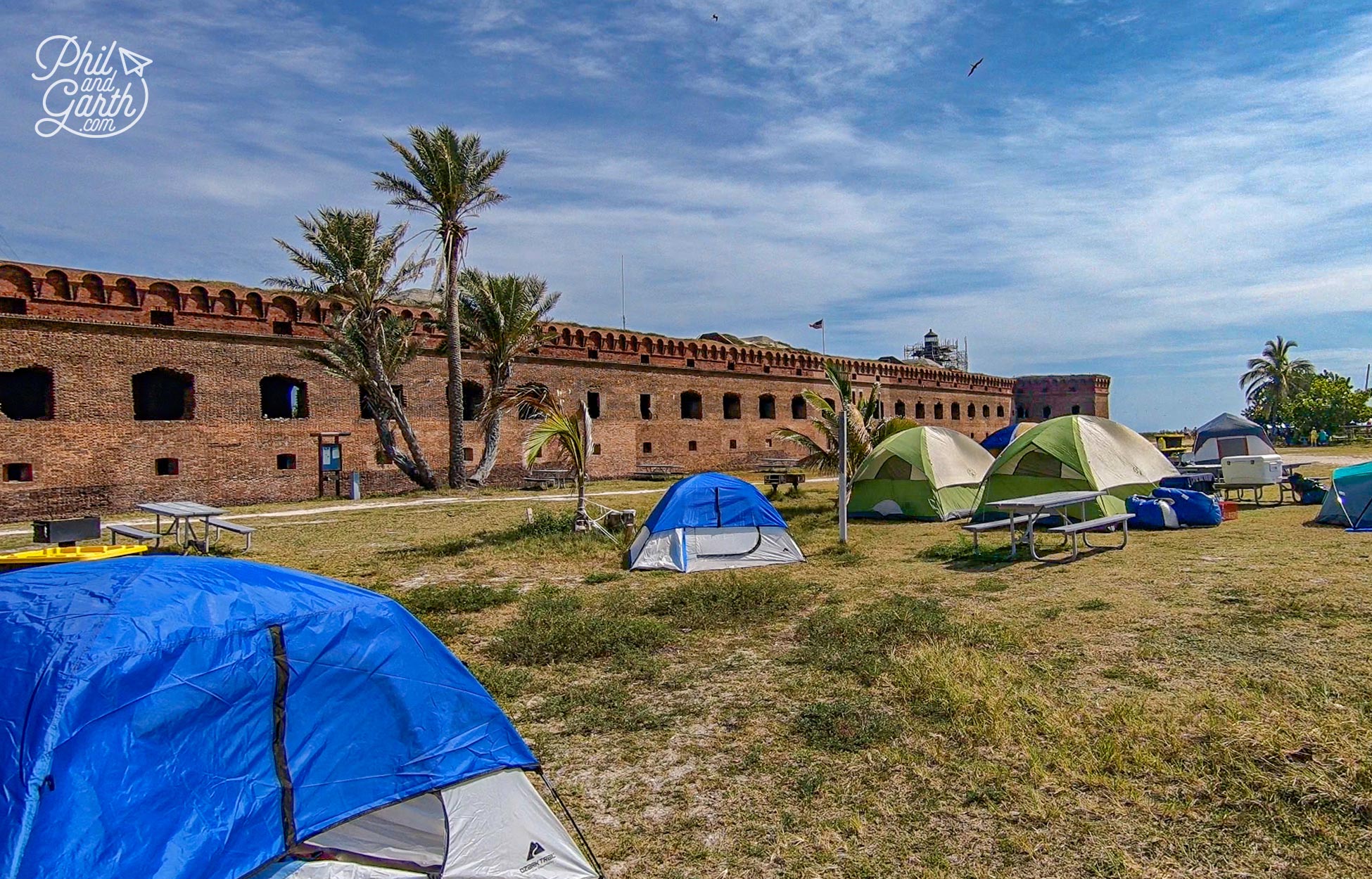
If you fancy camping at Fort Jefferson you might need to book 12 months in advance!
Fort Jefferson
Fort Jefferson is the main attraction on land to see in the park. It was built to protect and control the Gulf of Mexico’s busy shipping lane to the USA and to provide US Navy ships refuge from patrols. Construction began in 1846 for 30 years, the fort was nearly finished but never actually completed and eventually abandoned as a military base.
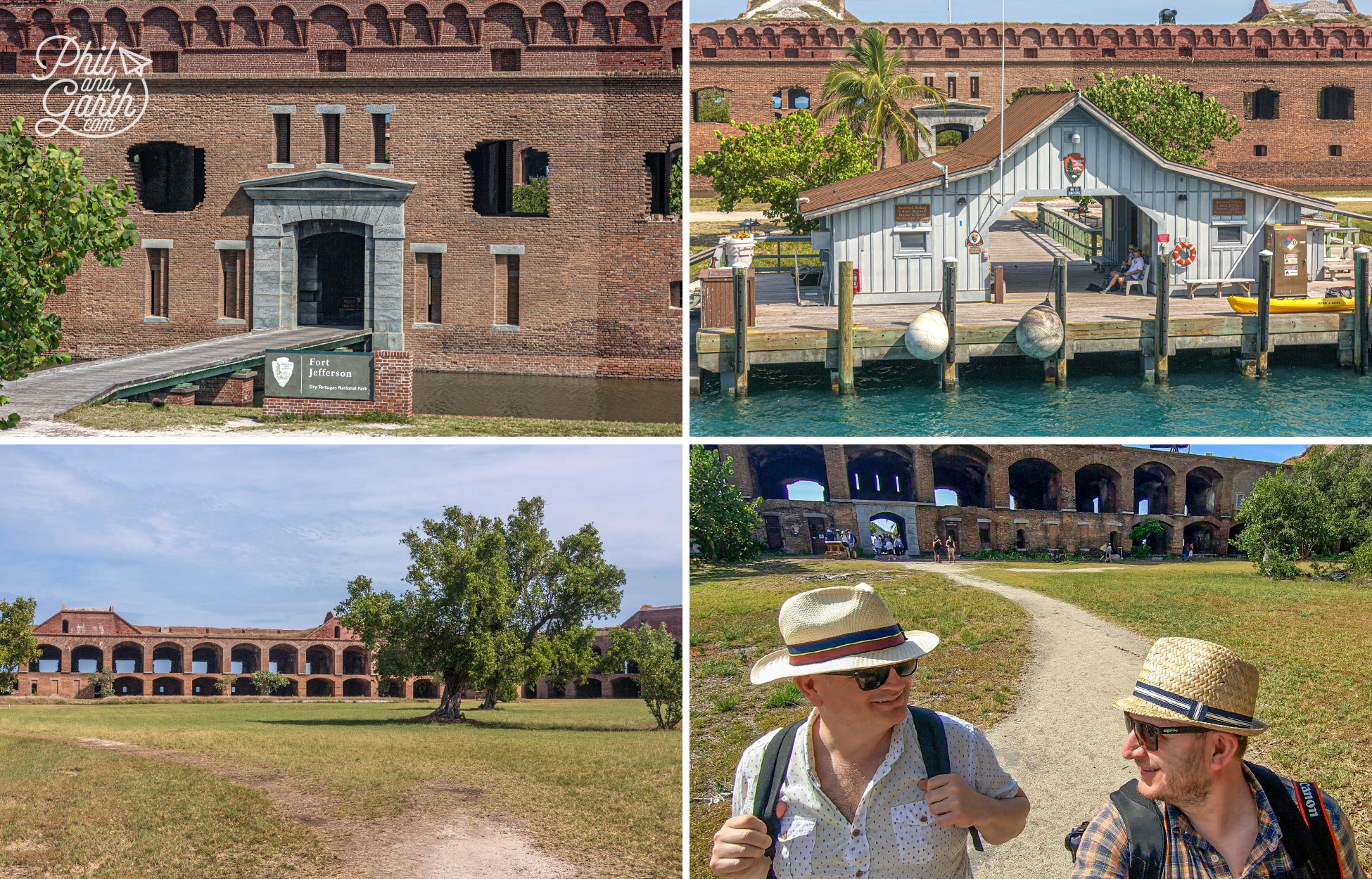
Exploring Fort Jefferson, part of the Dry Tortugas National Park
It’s really impressive, especially when we first saw it from the ferry emerge out of nowhere on the horizon. Stepping inside we were struck by the remoteness and the sheer scale of the place. The fort structure remains suprisingly well intact, we imagined it would be in a more ruined state. How they built this fortress in the middle of the sea is mind boggling!
History & Design
Right in the middle of America’s Civil War, Fort Jefferson was built, mostly by prisoners and enslaved African Americans contracted by the US Army. Conditions were very harsh because of the heat, lack of fresh water, hurricanes, shifting sands, mosquitoes and disease. An estimated 16 million hand-made bricks were used to build the 6 sided design with two storey casemates – the gunrooms that housed the large cannon guns. Each storey had 150 cannons with more on the top of the fort, in all a total of 420. However they were never used in battle, but they did serve as a major deterrent to enemy ships. The design of Fort Jefferson also included a system for collecting valuable rainwater and wrought iron shutters built into the lower casemate walls for shielding the cannon’s crew in-between firing.
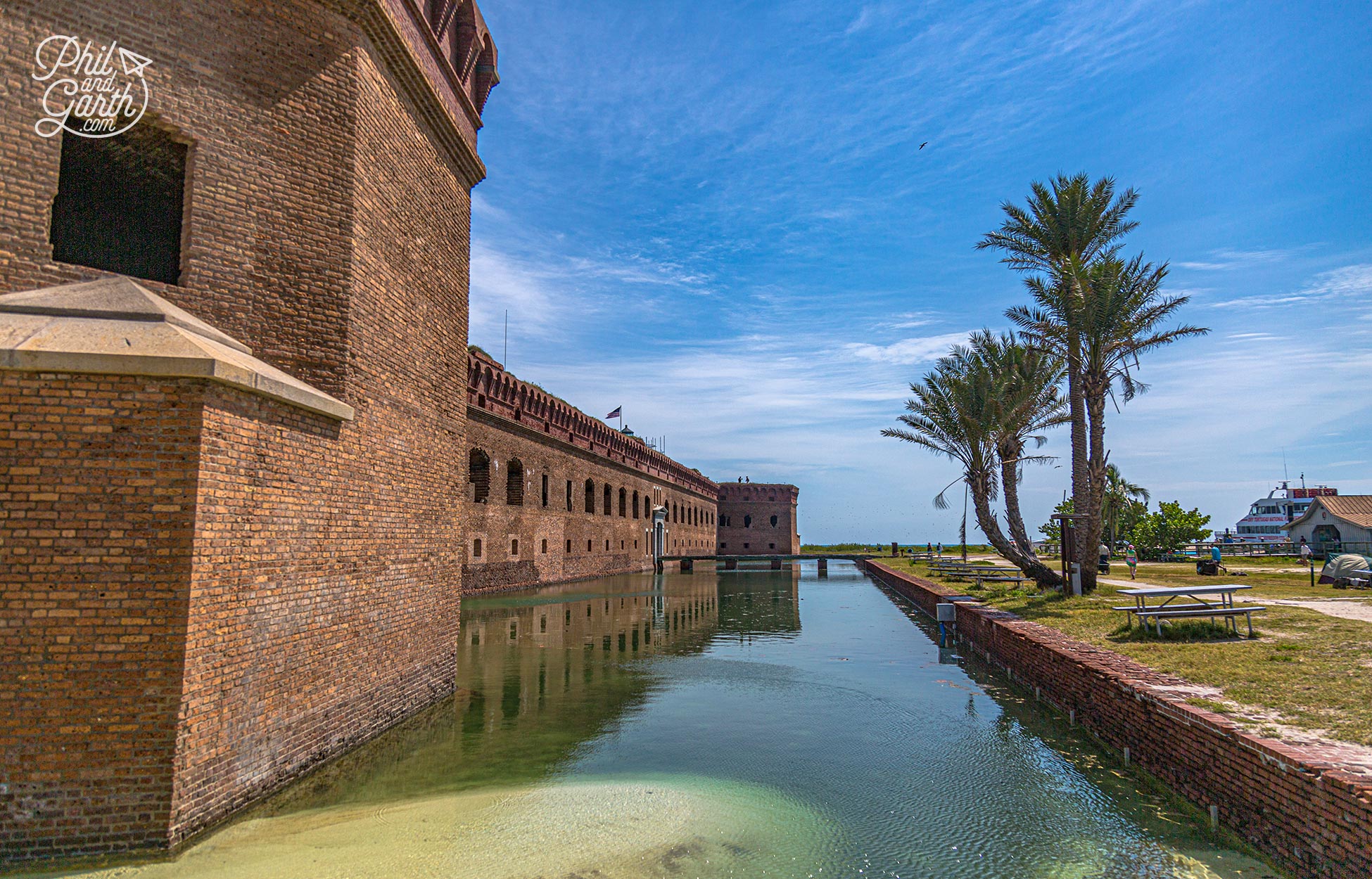
Dry Tortugas – America’s unique national park at the end of the Florida Keys.
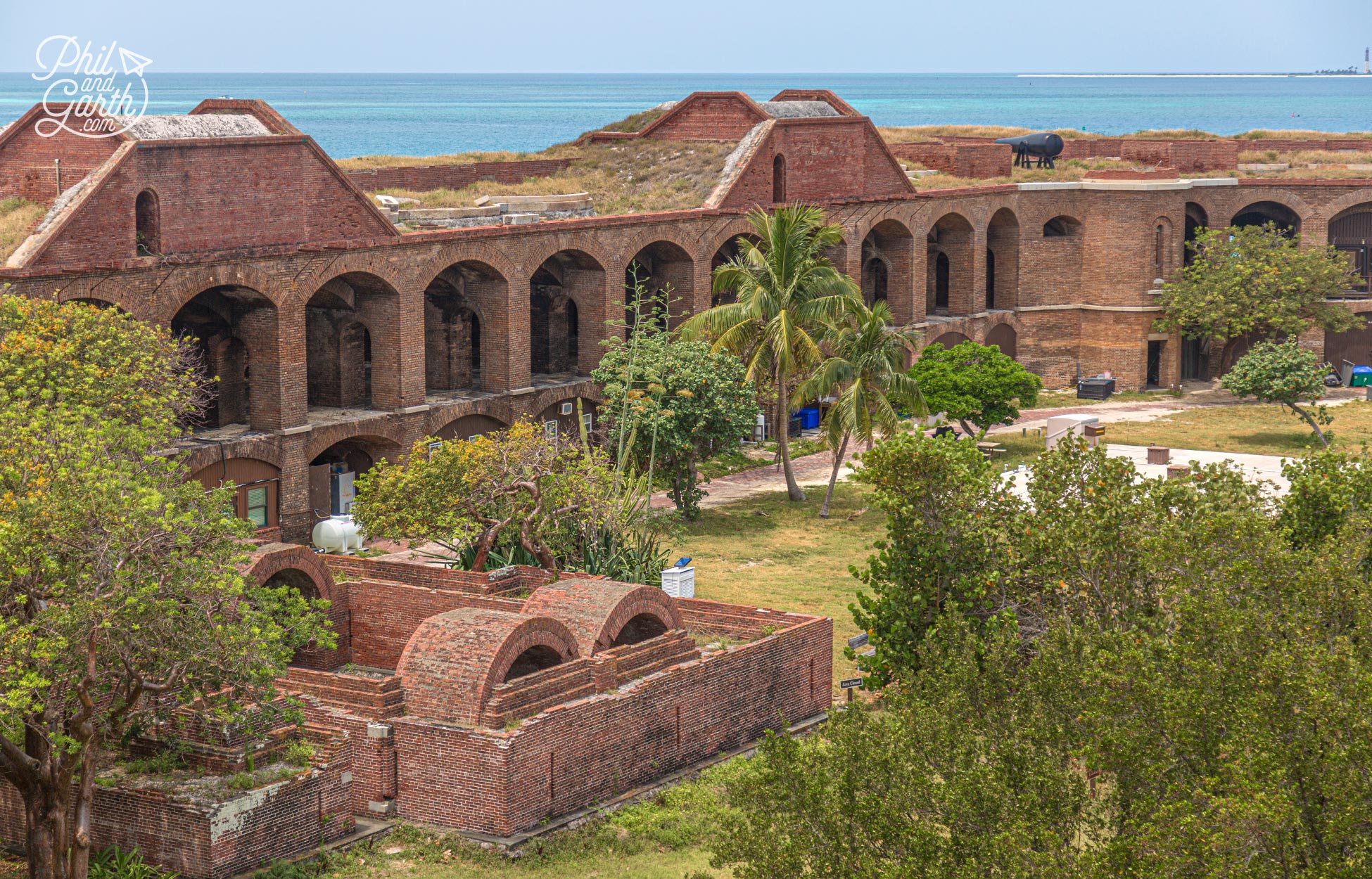
Fort Jefferson is America’s third largest fort and spectacular coastal fort
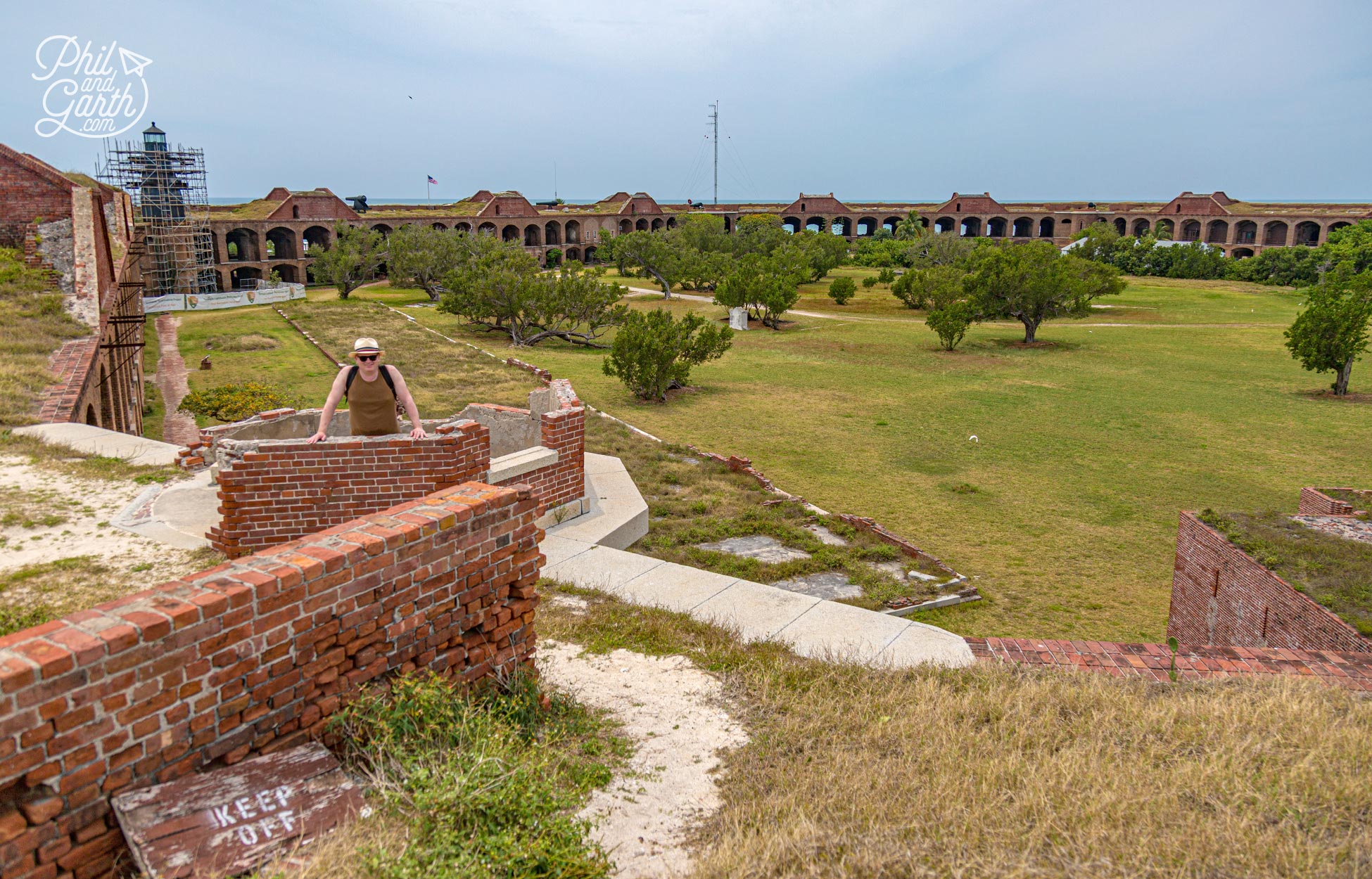
Phil standing at one of the corner bastions

Inside the casemate rooms, there are over 2,000 arches at Fort Jefferson
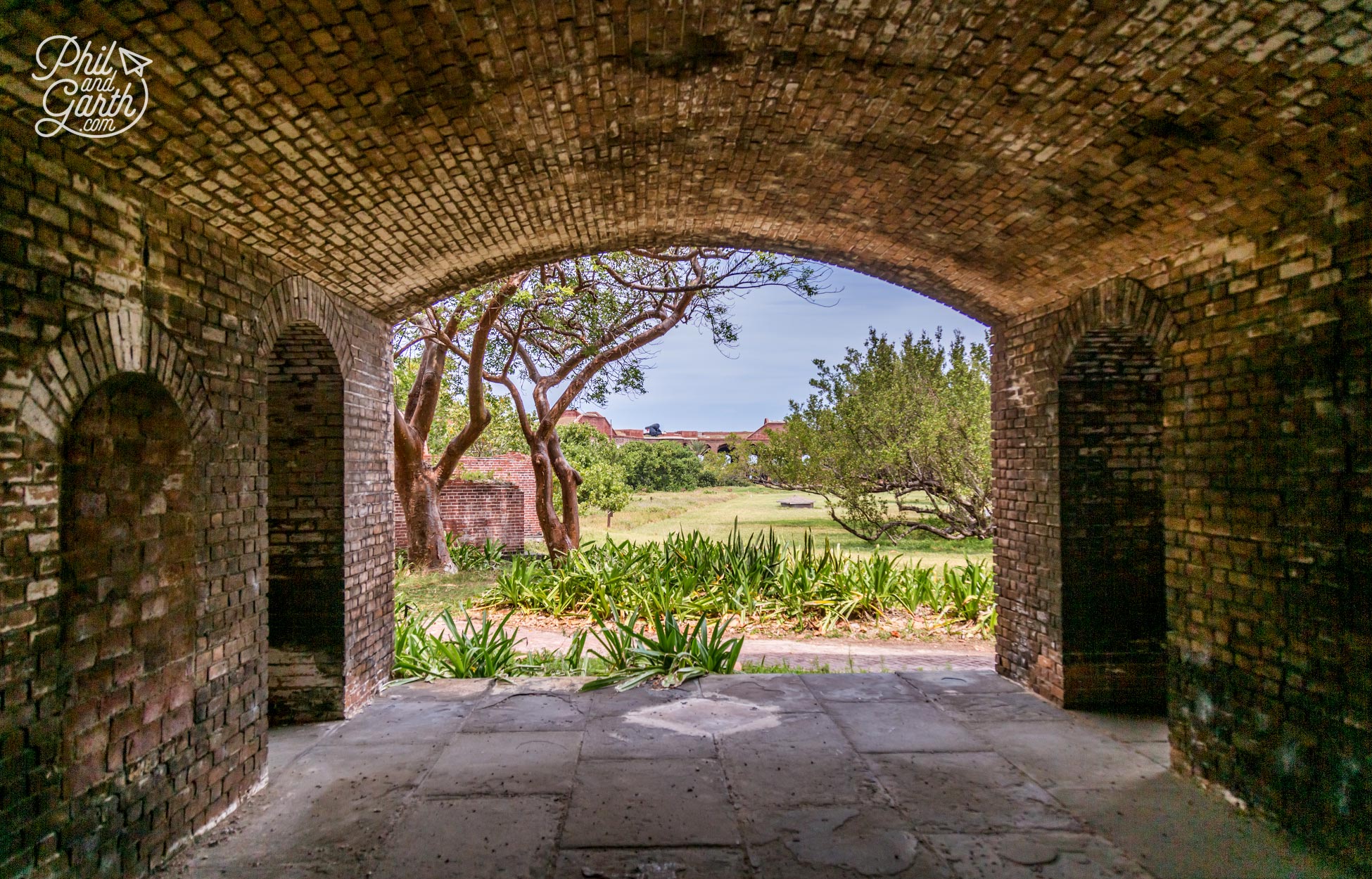
A lovely view of the grounds framed by an arch of a casemate room
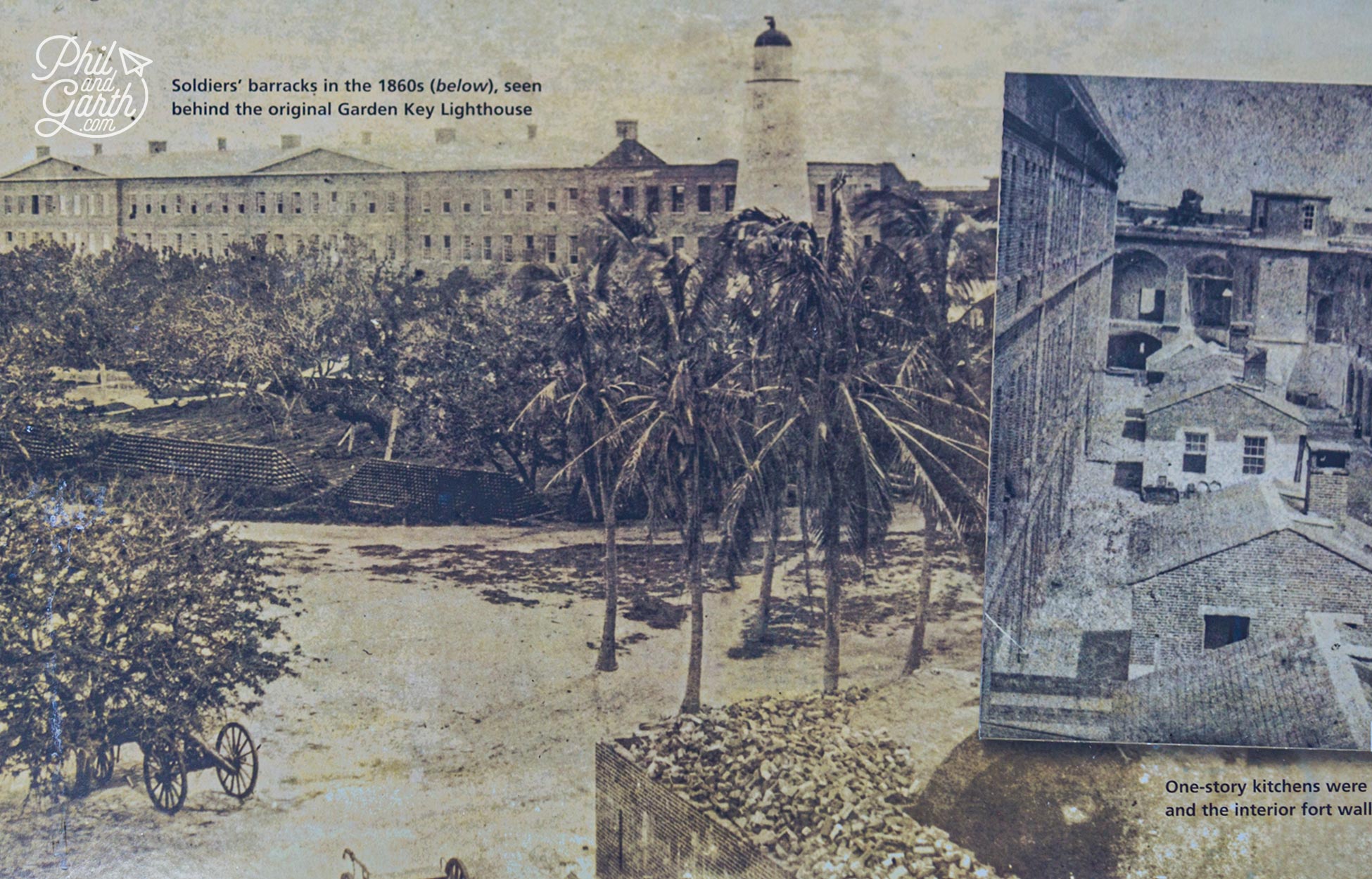
One of the information panels shows old photographs of the barracks before it was knocked down.
In the middle of the fort’s 16 acre grounds stood a three storey barrack, a home for 1,000 soldiers. It was damaged by a fire in 1912 and knocked down in the 1960s, all that remains today is the foundation. There were other one storey buildings built such as kitchens and magazines – the buildings to store gunpowder reserves.
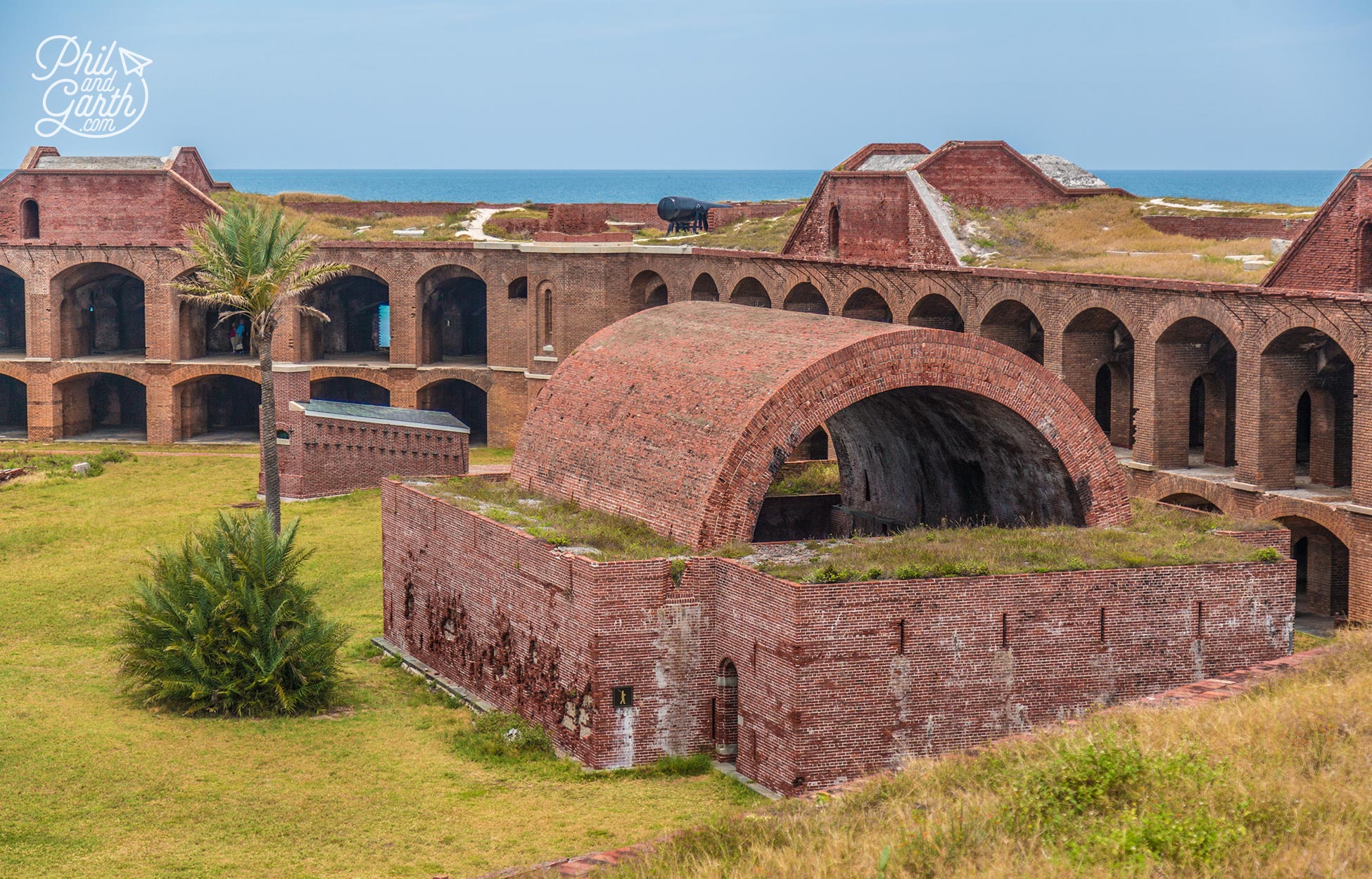
An old magazine building used to store gunpowder
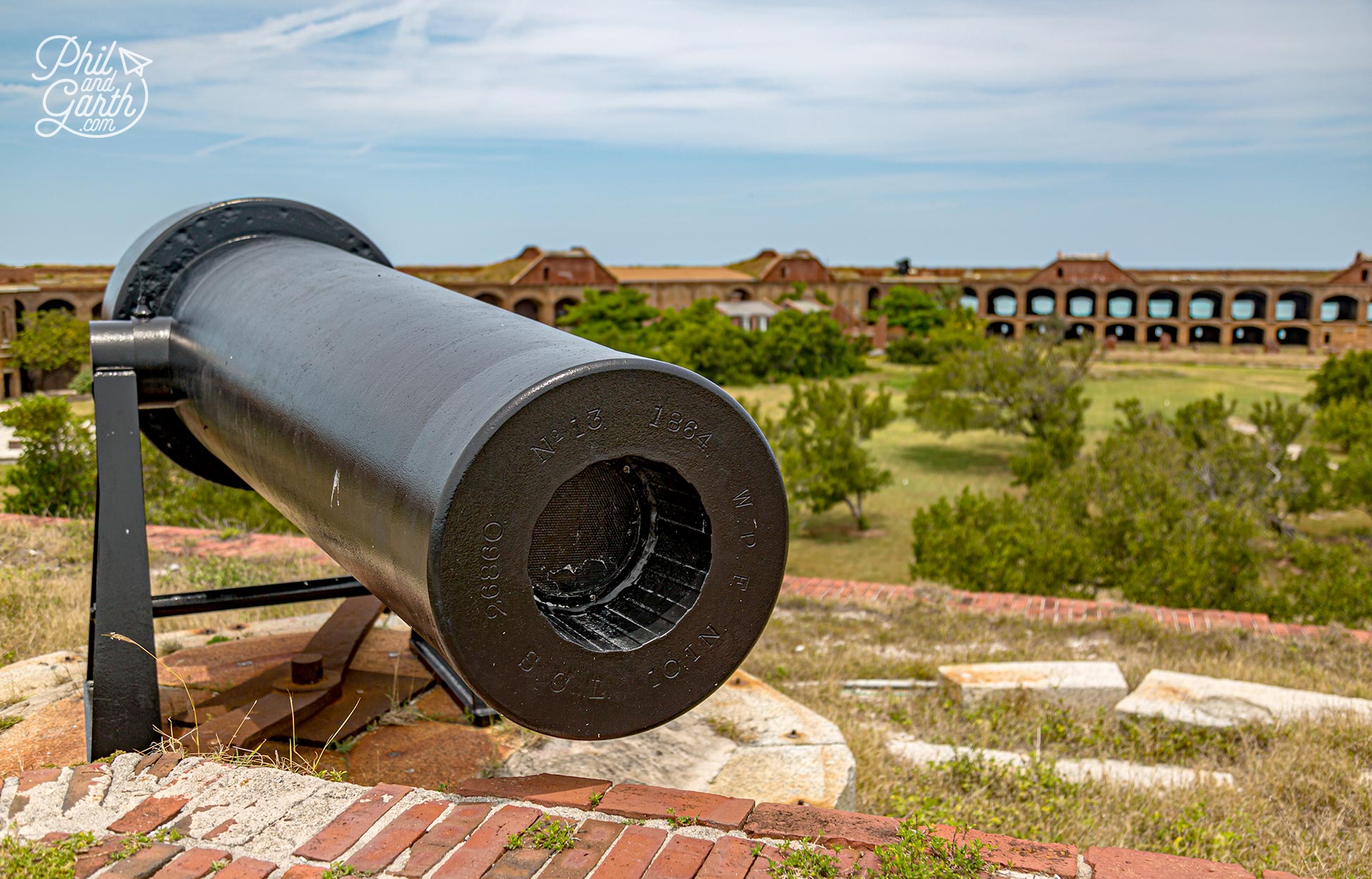
Look inside the barrel of the cannon for grooves which made projectiles spin for 3 miles
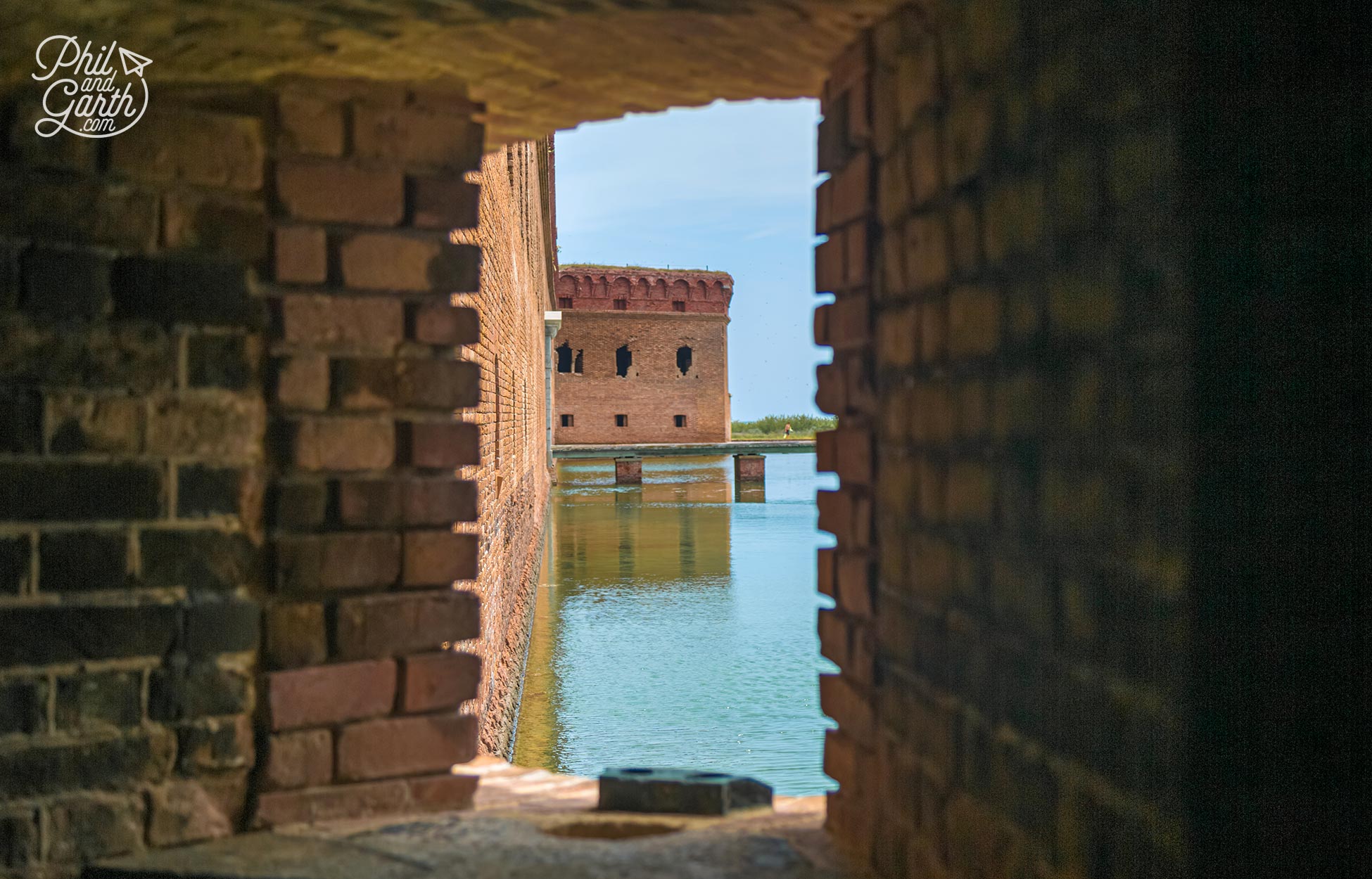
View from one of the cannon windows on the lower level
To protect the fort from amphibious assault a seawall and moat were built and to also provide protection from the rough waters of the Gulf of Mexico. The fort also served as a military prison for captured Union deserters. Its had some famous prisoners including Dr. Samuel Mudd for his involvement in the assassination of President Abraham Lincoln.
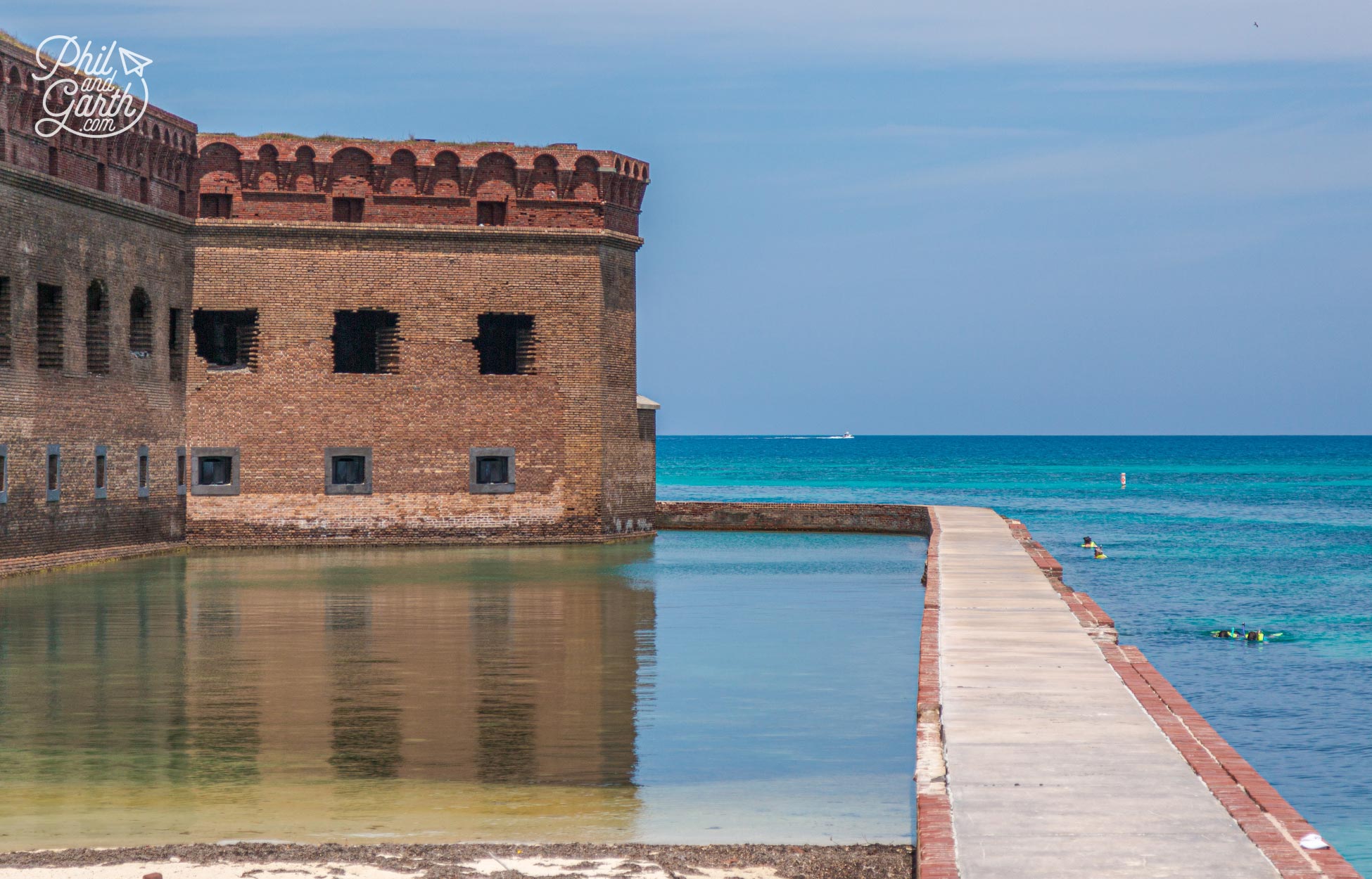
The seawall and moat surrounding Fort Jefferson
The army left in 1874 and by 1888 the cost of maintaining the fort could no longer be justified. In 1990 most of the fort’s cannons were sold for scrap metal. It was then designated a wildlife reserve in 1908 with operations transferred to the Department of Agriculture. In 1935 Fort Jefferson was declared a National Monument and went on to gain National Park status in 1992.
Dry Tortugas Snorkeling
99% of the Dry Tortugas National Park is underwater. The protected living coral reef here is at the end of the Florida Keys reef (the 3rd largest reef in the world). Dry Tortugas is considered to be the best place for snorkeling in the whole of the Florida Keys (and the Caribbean) because it’s the least disturbed and unspoilt.
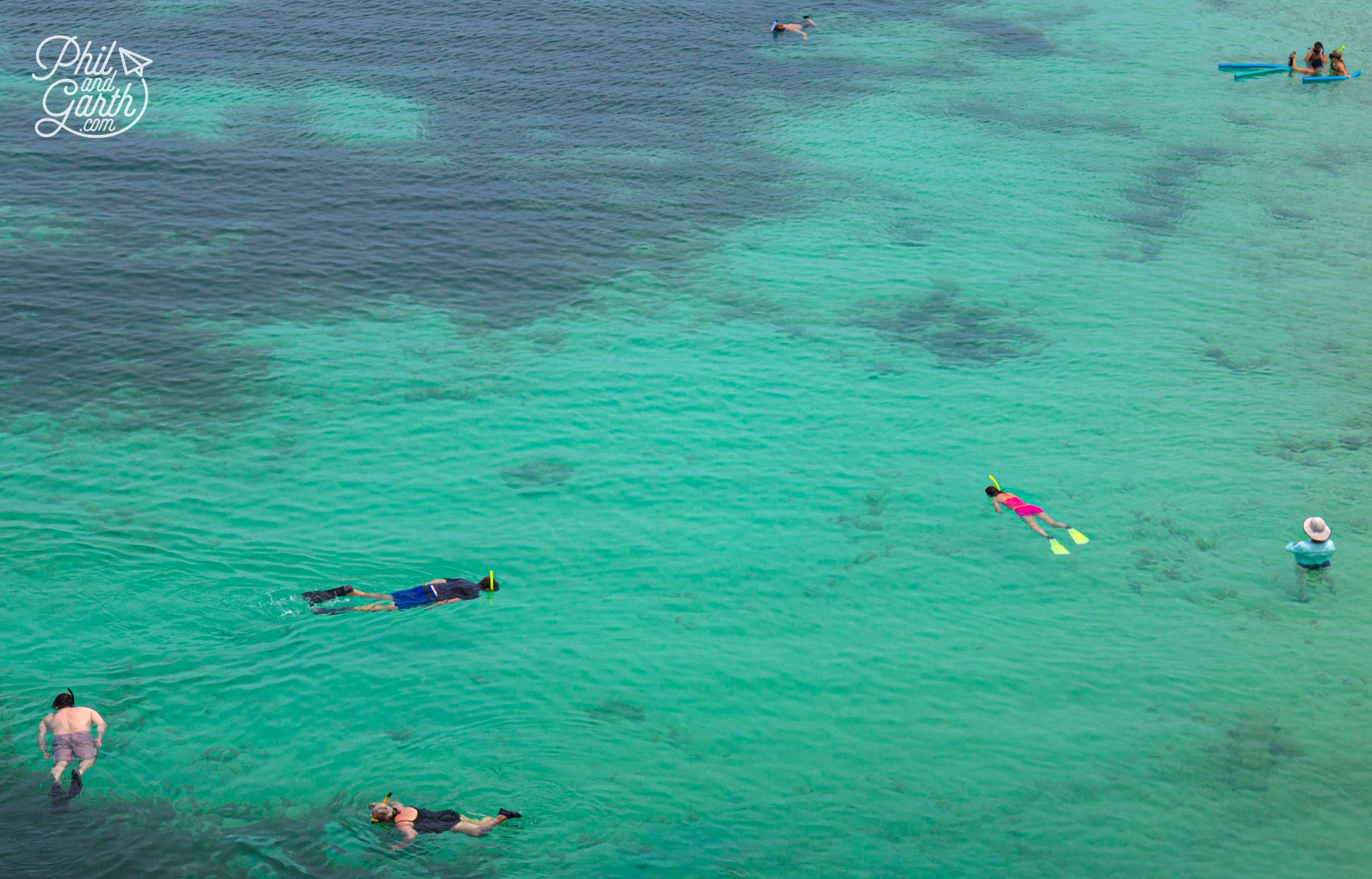
Snorkelling at Dry Tortugas National Park
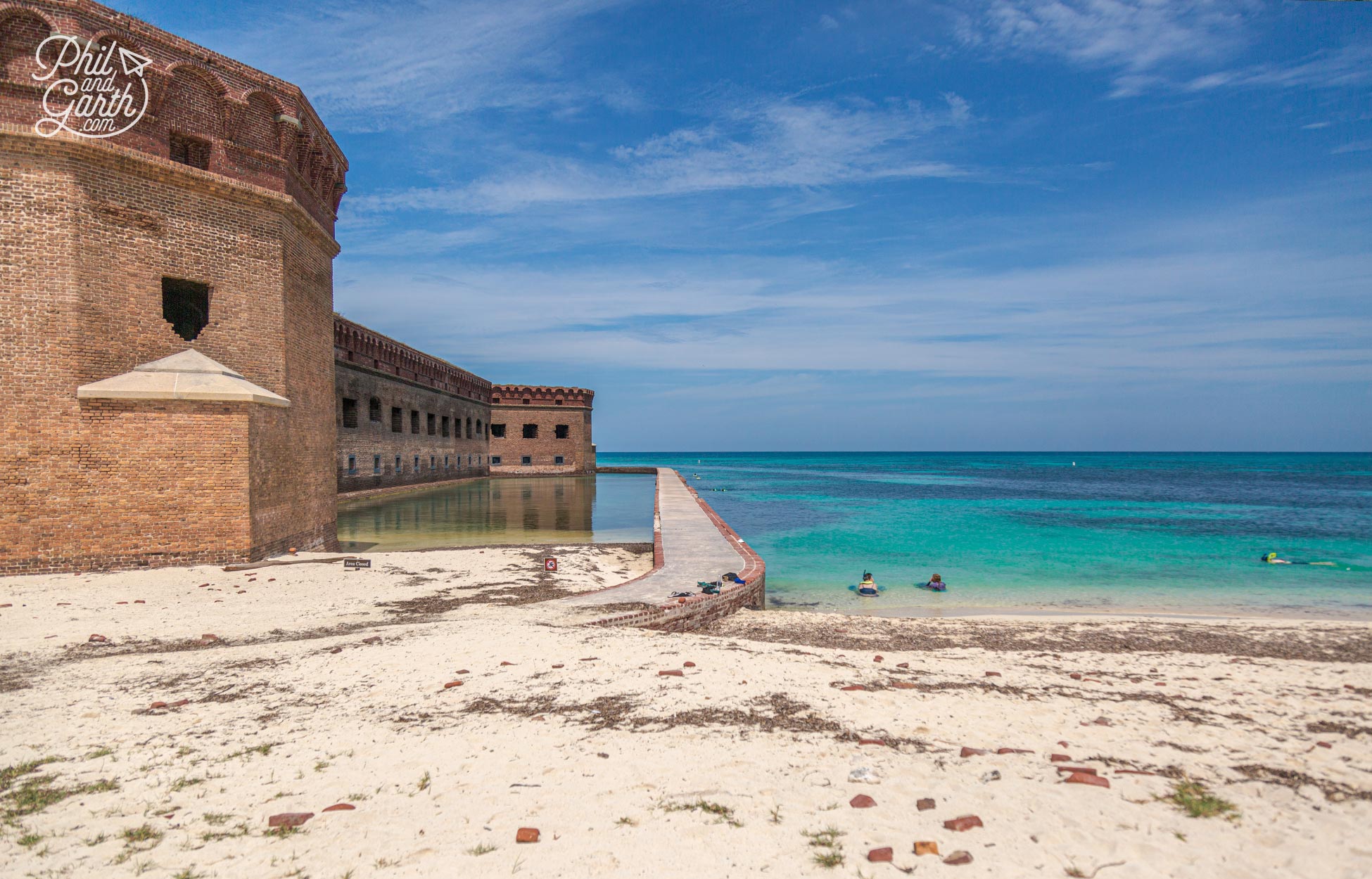
Next to the moat, one of the pristine beaches for snorkelling
We were itching to get into the crystal clear water, Phil’s not mad about snorkelling however Garth loved coming face to face with the fish. Just below the surface is an abundance of marine life, over 400 species of tropical fish!
Some of the best snorkelling is found on the outside of the moat’s seawall. You might see brain coral, reef squid, hogfish, tarpons, barracudas and nurse sharks. Old wooden pilings that stick up out of the water are also a great place to snorkel. Some of these used to hold old coal warehouses to restock Navy ships.
Our favourite part of the day was just relaxing, floating around using our noodles in the warm water. Noodles are available for free when you pick up your snorkelling gear.
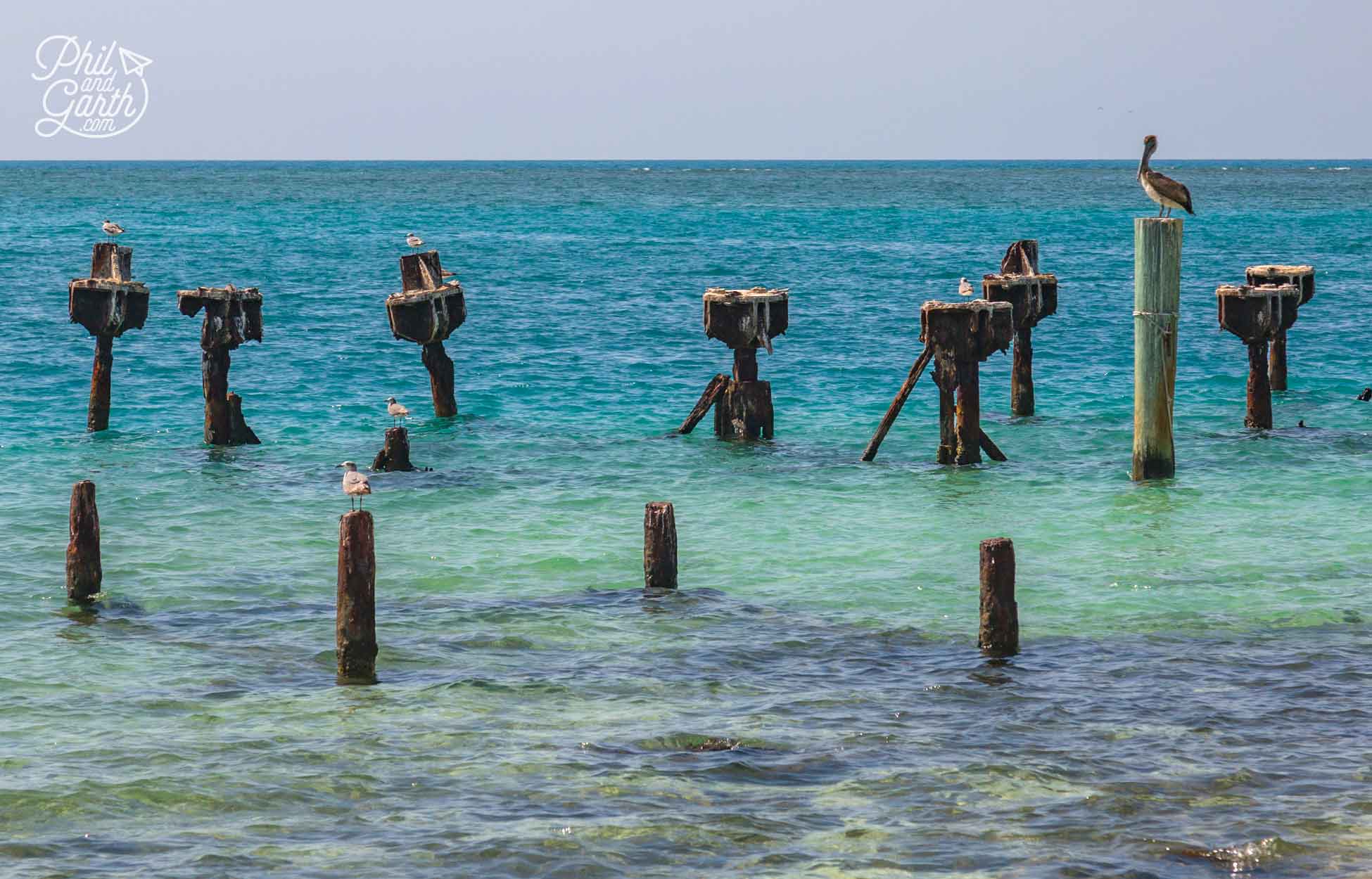
Old pilings that stick up out of the water are a great place to snorkel
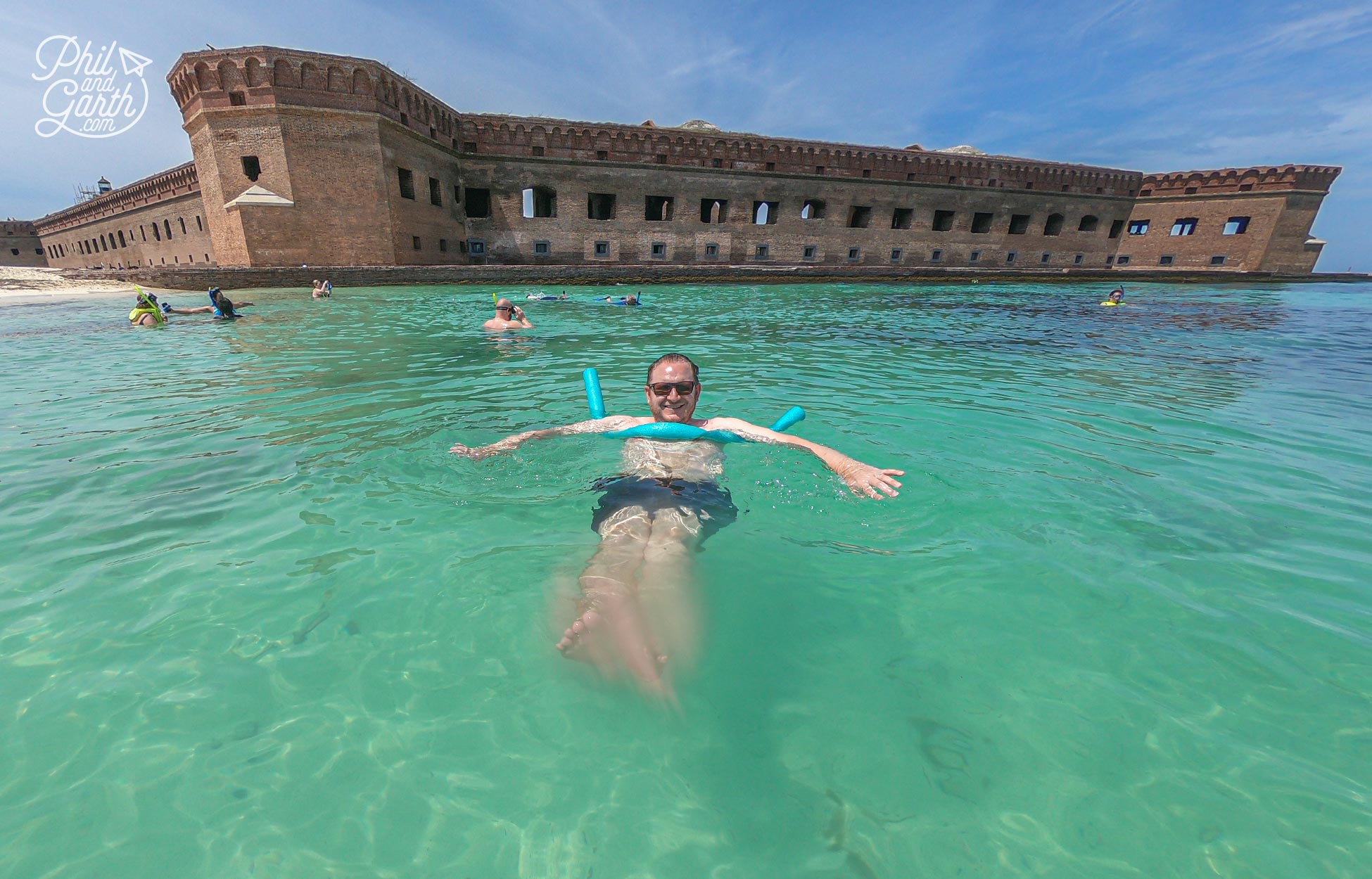
Garth relaxing with a noodle in the gorgeous turquoise water.
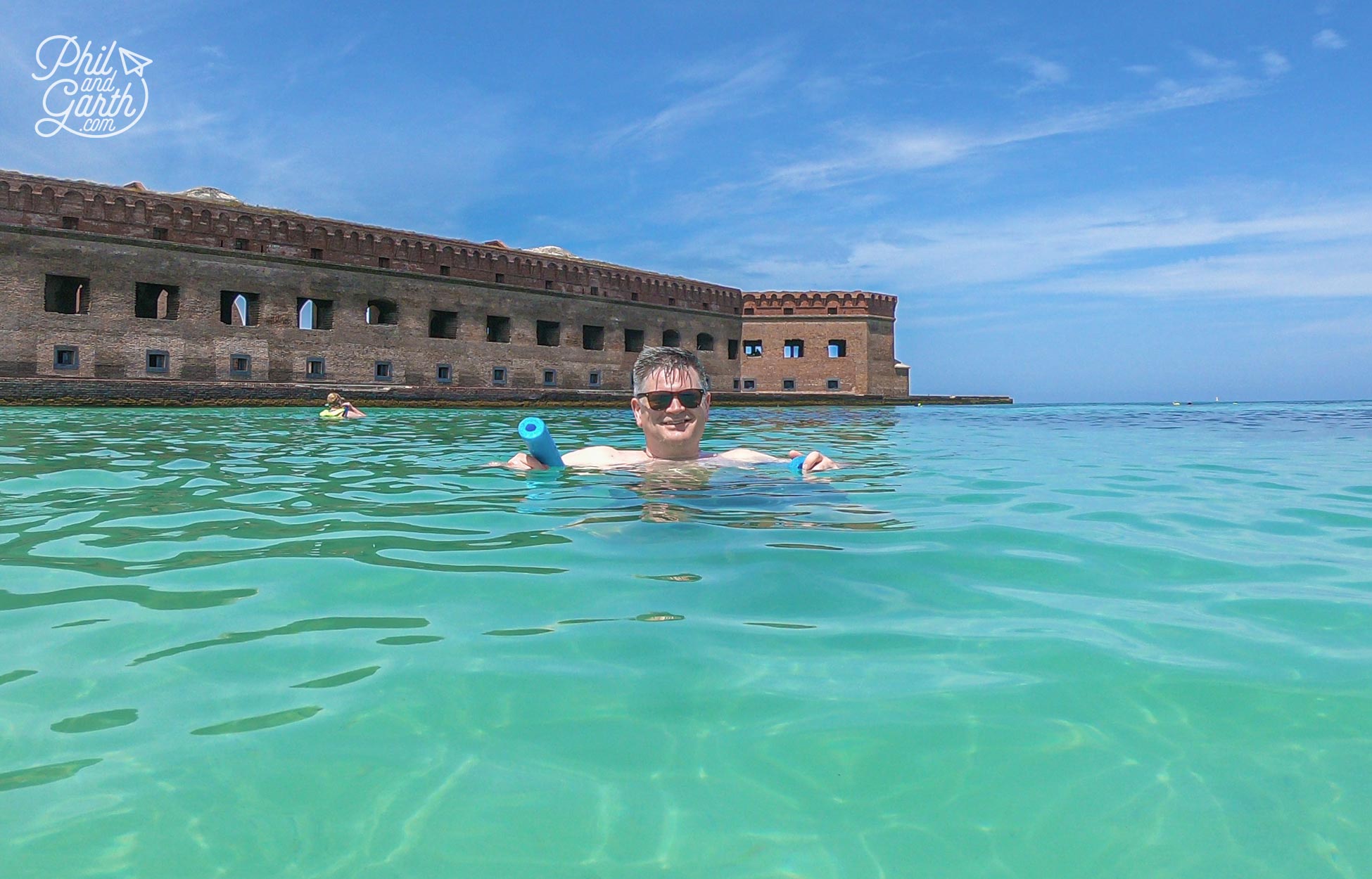
Phil enjoying the sun and the water of Garden Key
There’s no doubt the beaches are incredibly picturesque because of the perfect turquoise water, the colour and shallow depth reminded us of our time we spent the Maldives, it’s so beautiful here. If you don’t fancy swimming then take some leisurely walks down one of the beaches and check out the numerous conch shells scattered around the sand. There’s lots of different shells to see plus other wildlife like hermit crabs crawling around.
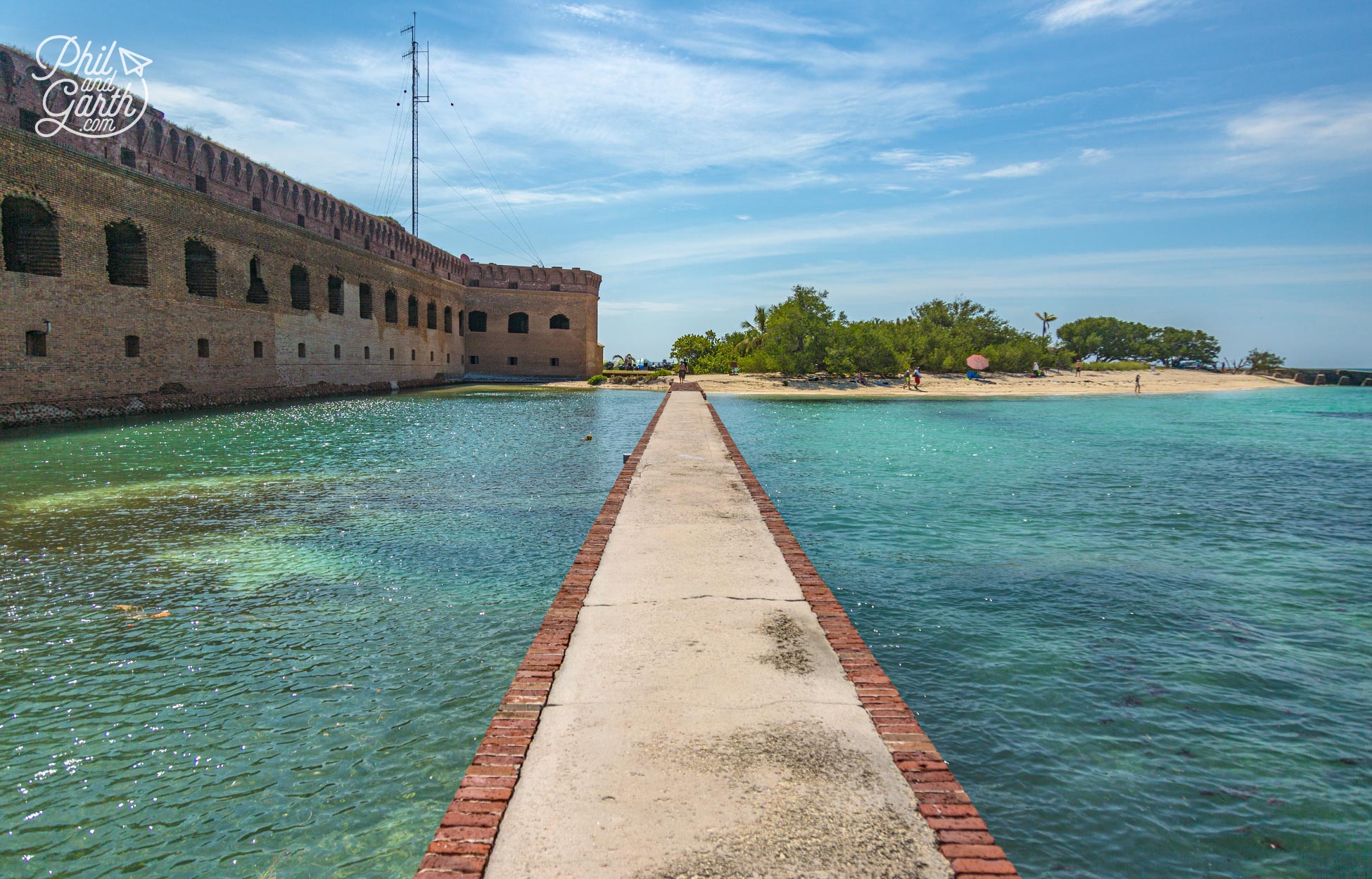
There’s very little shade on Dry Tortugas, however this small beach offered a little
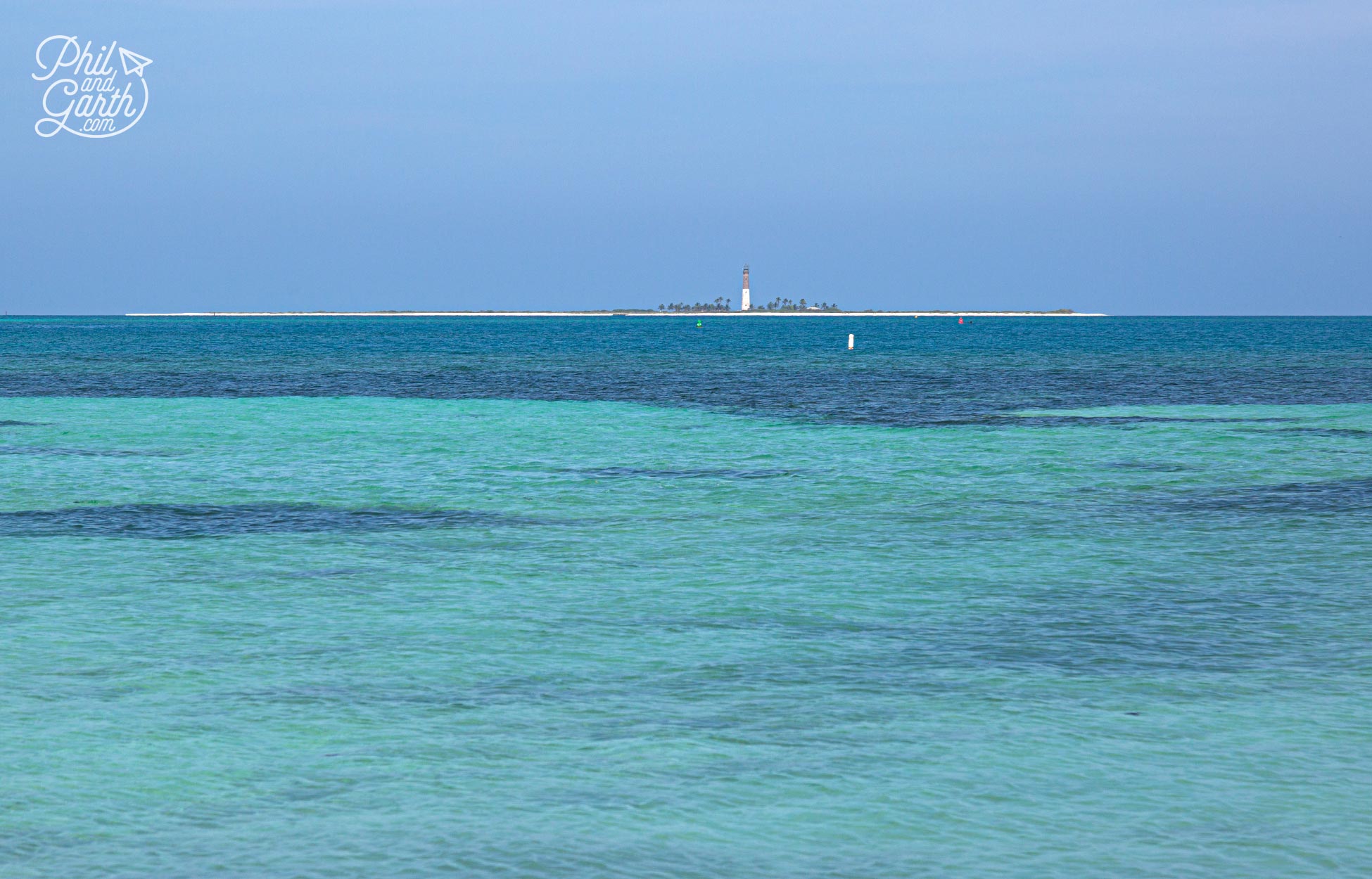
View across the neighbouring island – Loggerhead Key
Dry Tortugas Map
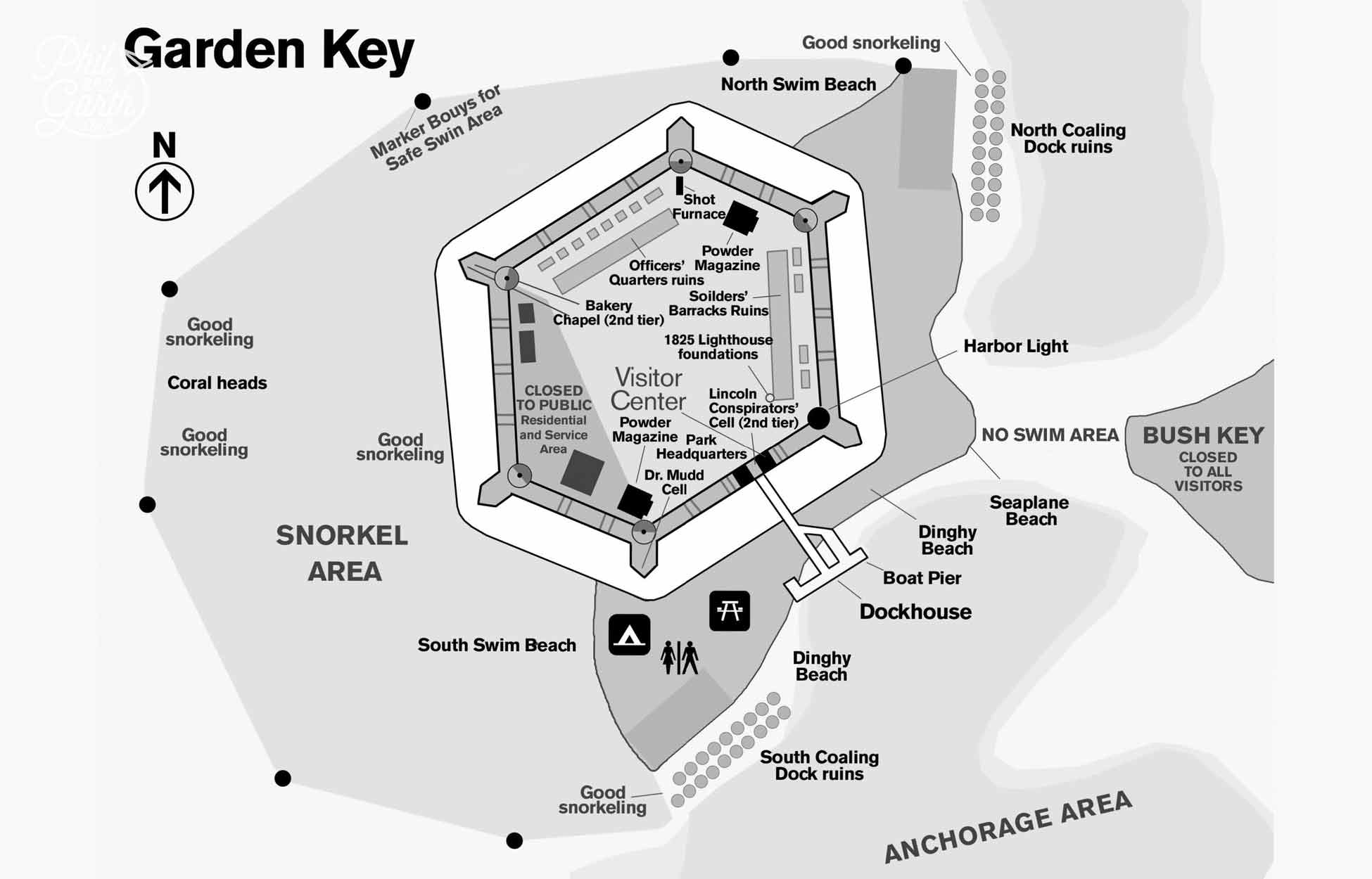
Map showing the best areas for snorkelling outside Fort Jefferson on Garden Key
Birdwatching at the Dry Tortugas
Many twitchers come here for the bird watching opportunities. Over 300 species have been spotted here. Spring and autumn are the best time to witness migratory birds. Expect to see thousands of sooty terns who use the park as a stopover. Other birds you might encounter include peregrine falcons, brown pelicans, yellow-billed cuckoos, brown noddy terns and double crested cormorants.
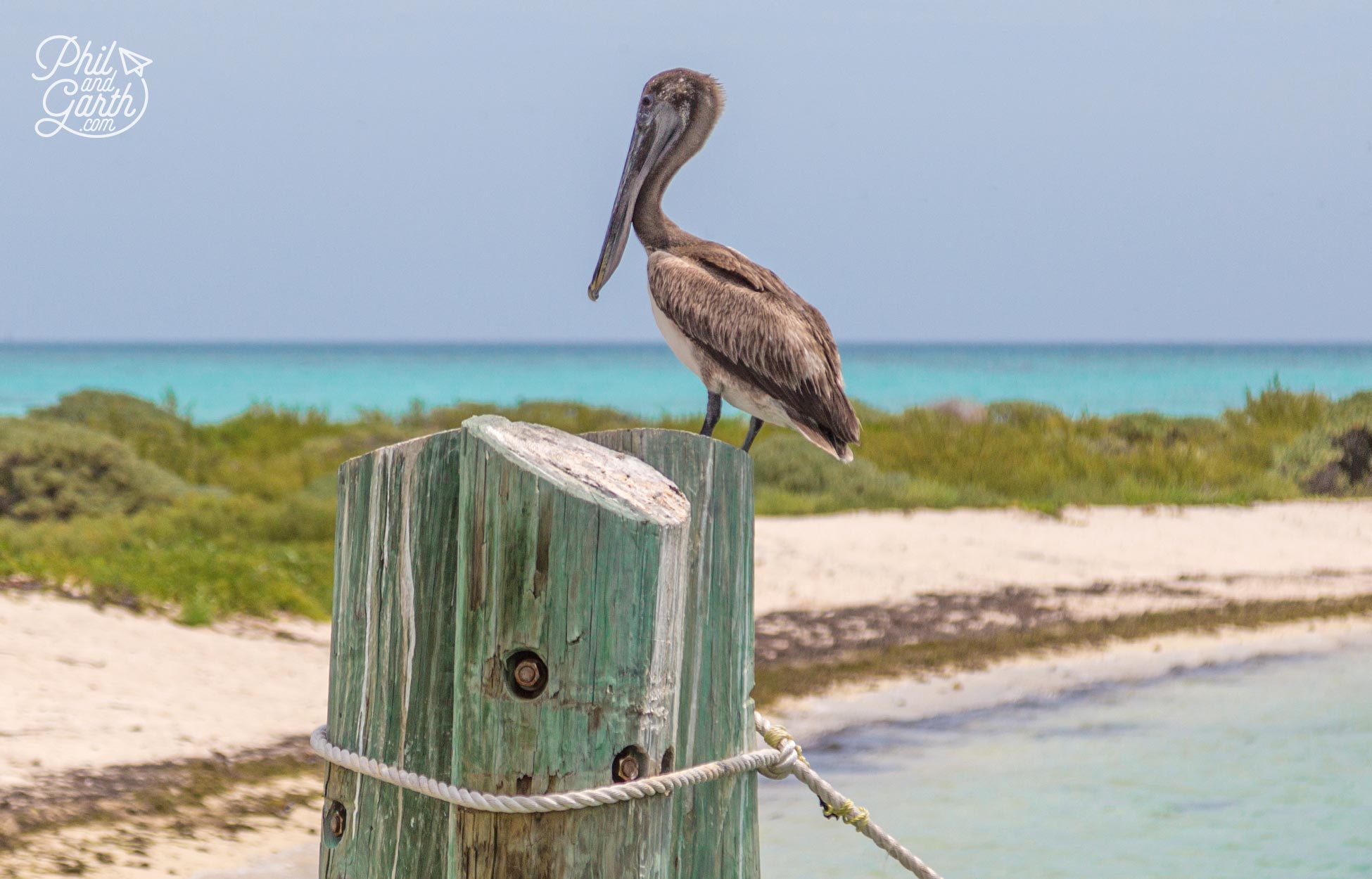
Plenty of bird watching opportunities at the Dry Tortugas National Park
Oh and if you were wondering – the name ‘Tortugas’ comes from the Spanish word meaning turtles, named after the large quantities of turtles the original Spanish explorer found here. ‘Dry’ was added later to the name to warn people about the lack of fresh water.
Yankee Freedom III Dry Tortugas Itinerary
- 07:00 Check In (Campers check in 06:30)
- 07:30 Boarding commences
- 08:00 Depart Key West
- 10:15 Arrive Garden Key for Dry Tortugas National Park
- 4.5 hours free time on island
- 11:00 Optional free guided tour of Fort Jefferson (45 minutes)
- 11:00 – 13:00 Lunch is served
- 15:00 Depart Dry Tortugas
- 17:30 Arrive back in Key West
When To Visit Dry Tortugas National Park
- May to October is high season. It’s summer and conditions are perfect for snorkelling and there is very little wind. It’s also the time for the Atlantic hurricane season, so keep an eye on the weather forecast.
- November to April is low season. It’s winter so snorkelling is not great. visibility is poor because of the rough waters. It’s also windy, so the ferry crossing can be uncomfortable.
Dry Tortugas National Park Practical Information & Advice
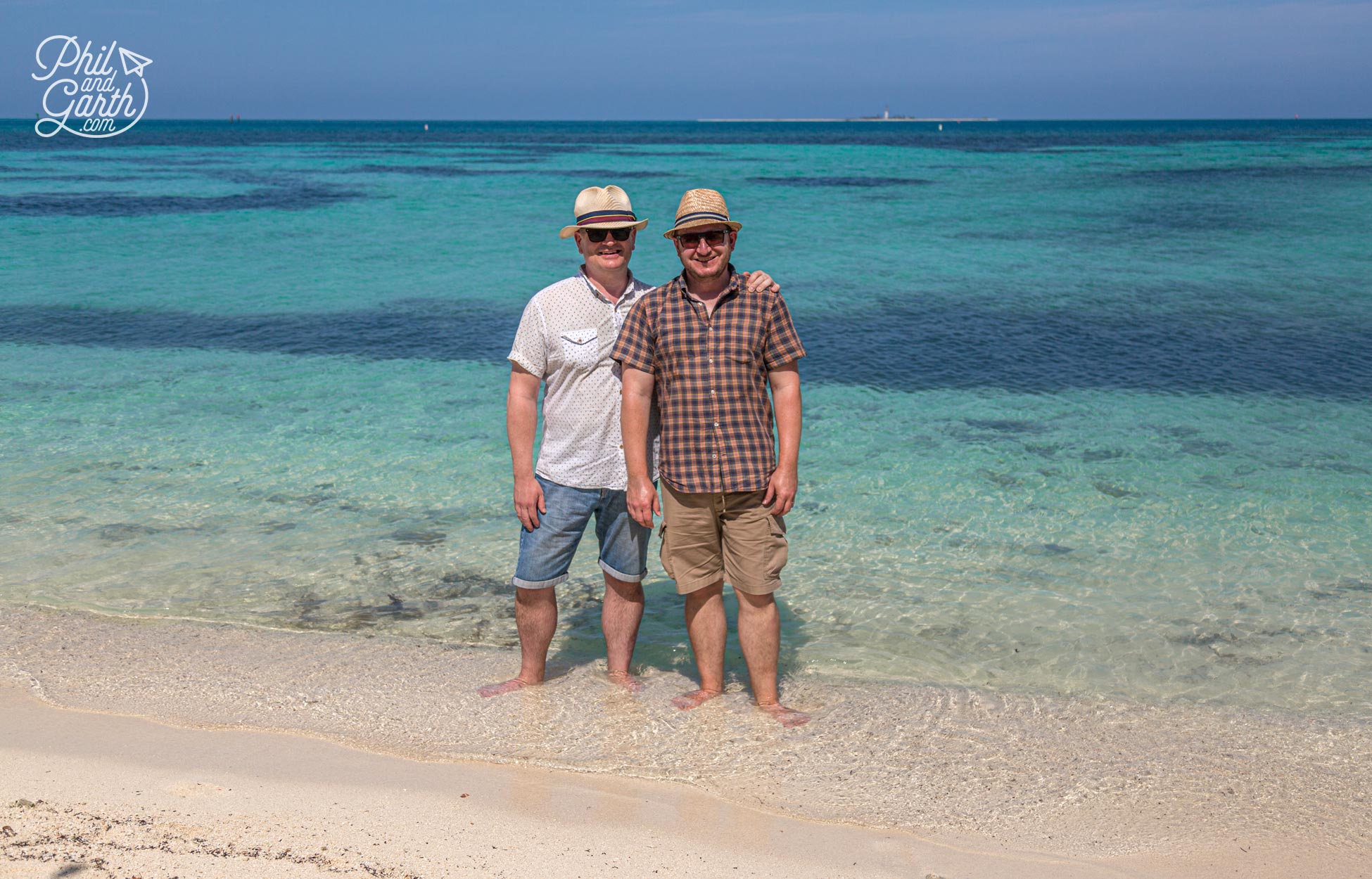
Phil and Garth’s Top 5 Dry Tortugas National Park Tips
Phil and Garth’s Top 5 Dry Tortugas National Park Tips
- Tip #1: Watch out if walking barefoot on the beaches, there’s loose bricks hidden and sticking out of the sand.
- Tip #2: Take coral reef safe sunscreen, sunglasses, hats, beach towels and binoculars for the birdwatching.
- Tip #3: When snorkelling look, but don’t touch – the coral and reef fish are all protected.
- Tip #4: There’s no mobile phone coverage or wifi here – so expect to be off grid for your adventure.
- Tip #5: If you suffer from sea-sickness, take tablets with you incase the sea is rough getting there.
How We Did It
- We visited Dry Tortugas the first week in May, the weather was perfect.
- It cost us $190 each, check the Yankee Freedom III website for the latest ferry price.
- More information on the official Dry Tortugas National Park website.
- We paid for 4 nights at the Kimpton Lighthouse Court Hotel in Key West.






